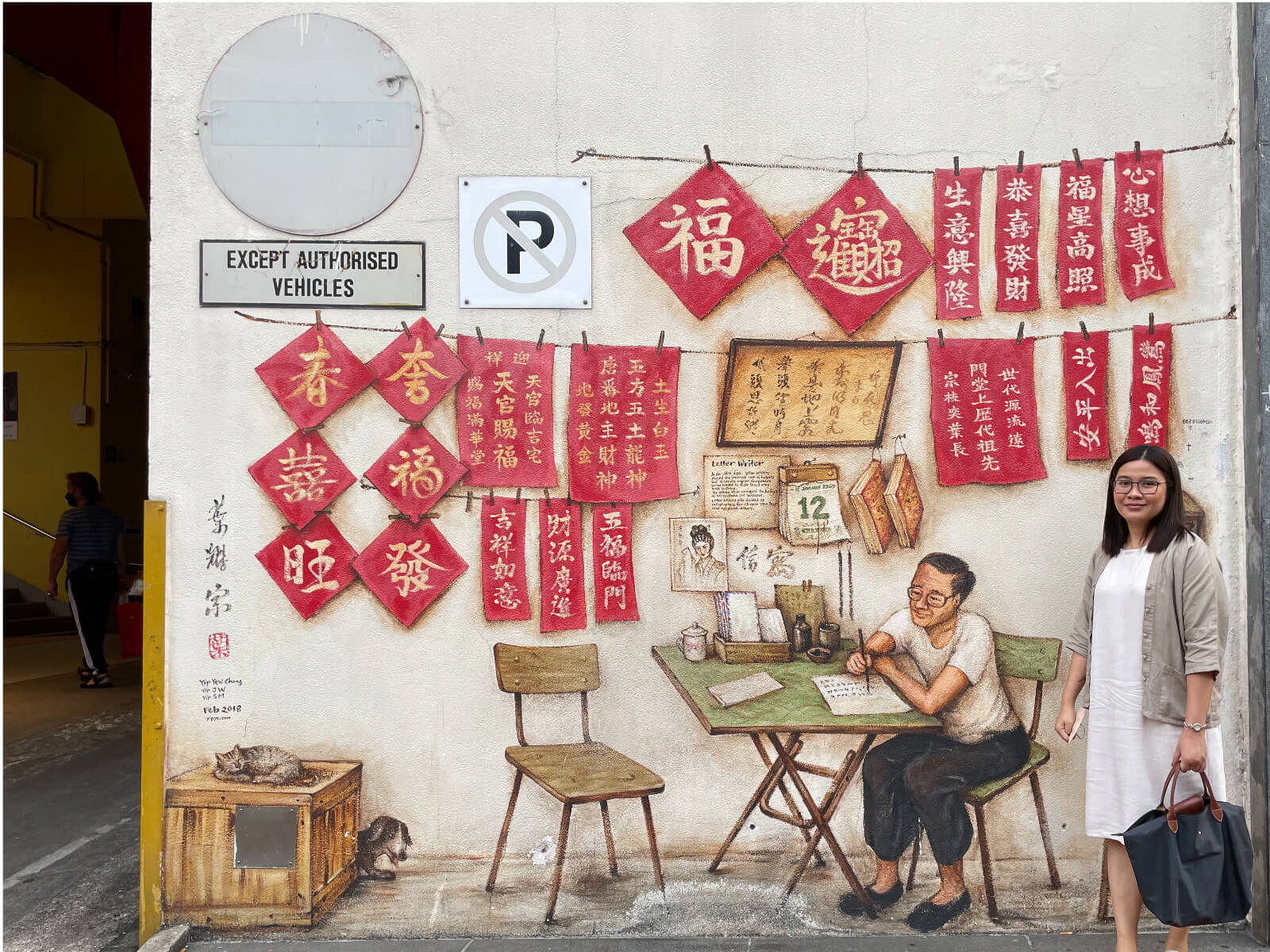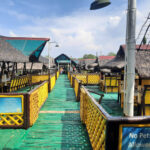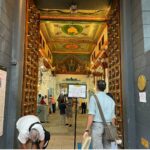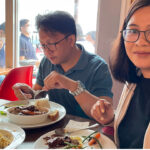Whenever we travel abroad, it’s a given that visiting the local Chinatown is one of our top things to do. Since time immemorial, Chinese settlements are one of the largest, if not one of the oldest, in most towns; thus, Chinatowns are colorful and have a lot of history. The cuisine is also another major draw. And so off we went to Chinatown on day two of our one-week stay in Singapore.
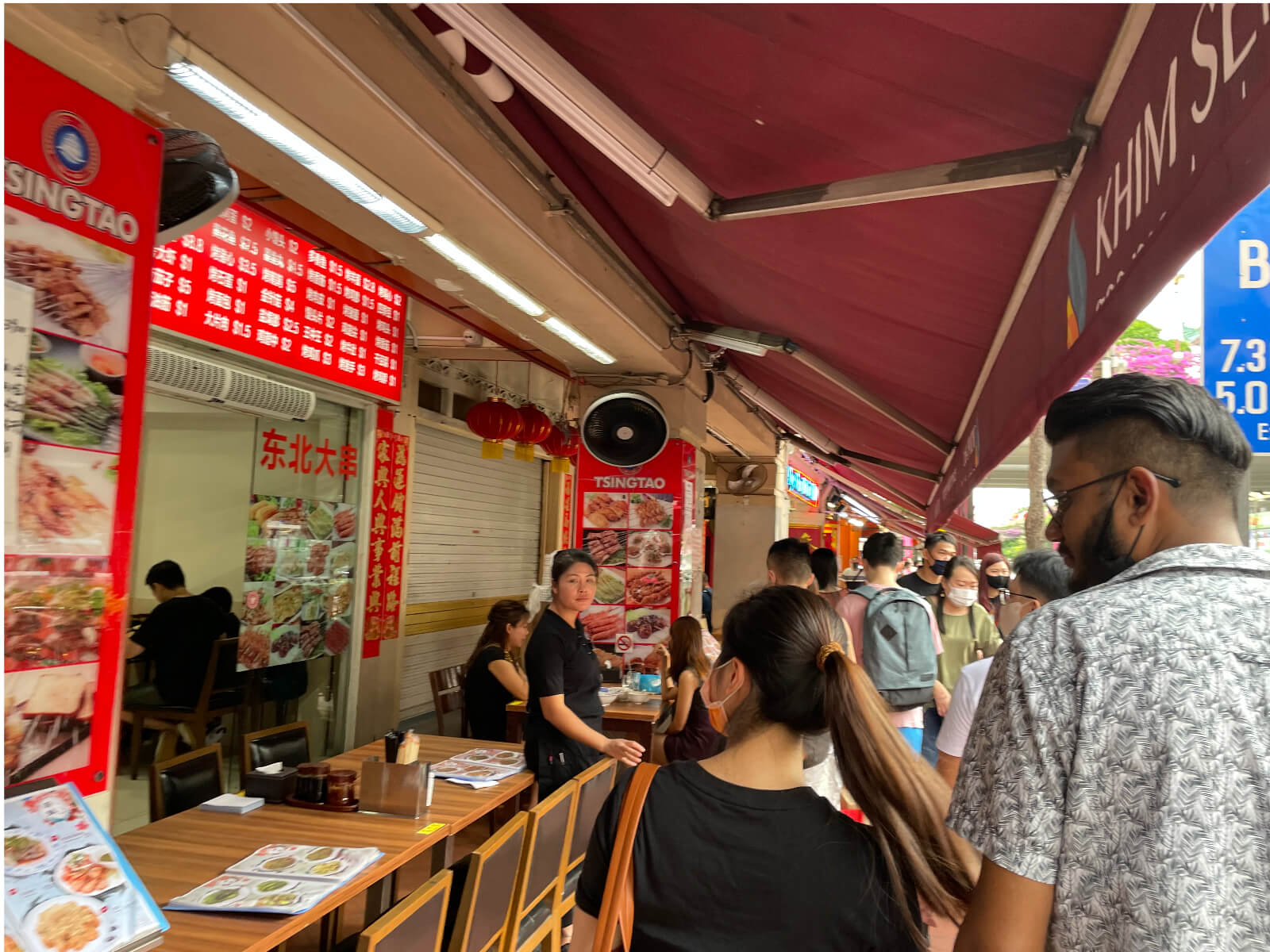
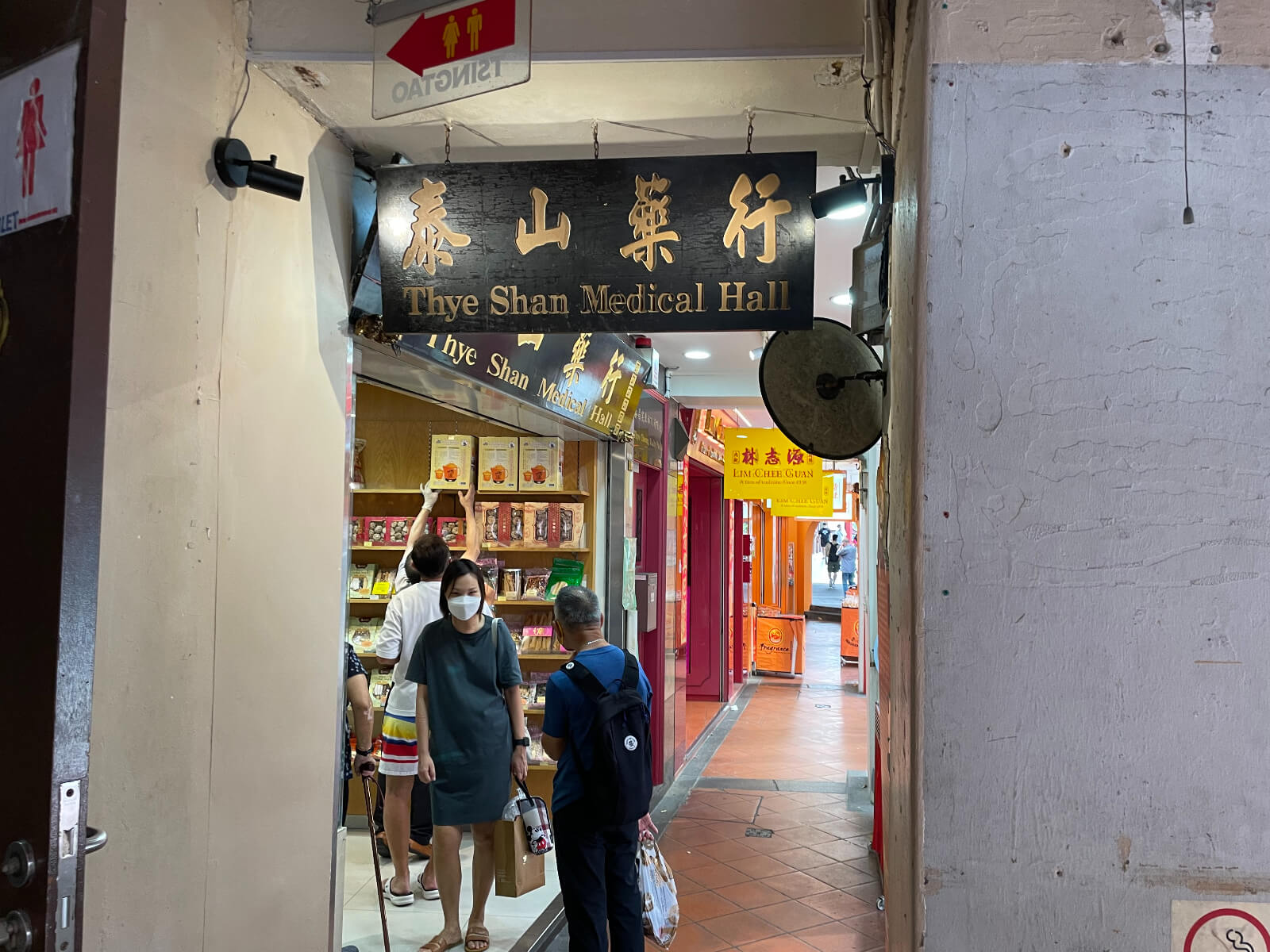
What’s so special about Singapore Chinatown? Well, just like our Chinatown in Binondo, Manila, the Chinatown in Singapore is one of the largest historical districts in the country. It has four sub-districts: Bukit Pasoh, Kreta Ayer, Telok Ayer and Tanjong Pagar. The heritage district was given a conservation status in the late 1980s, according to the National Library Board of Singapore.
Singapore’s Chinatown has undergone so many changes, making it the “jewel” it is known today. From its infancy in the 1800s to the major renovations of shophouses in the 1980s, the town has gone through a major facelift. Many things have changed but glimpses of the past still remain.
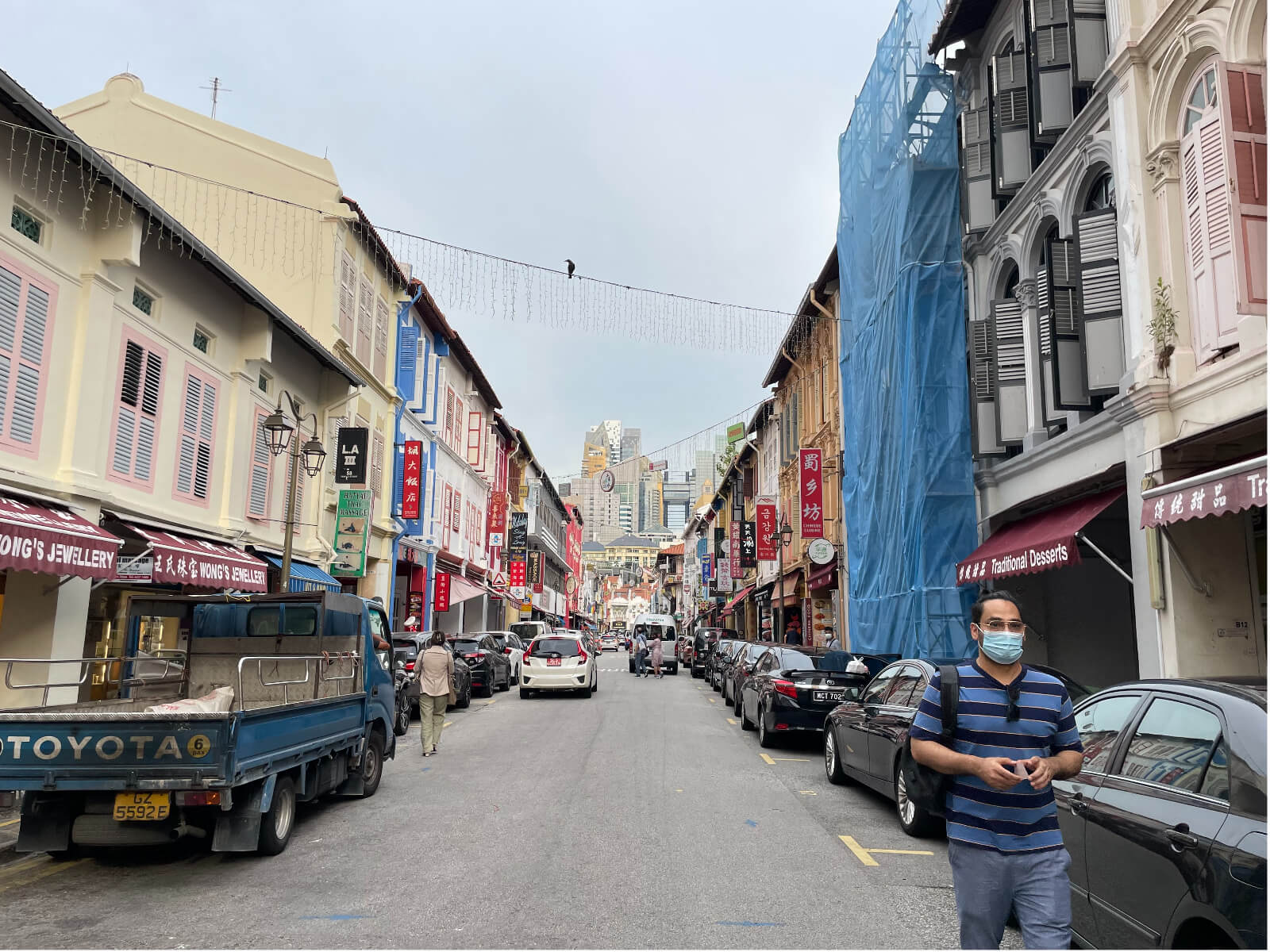
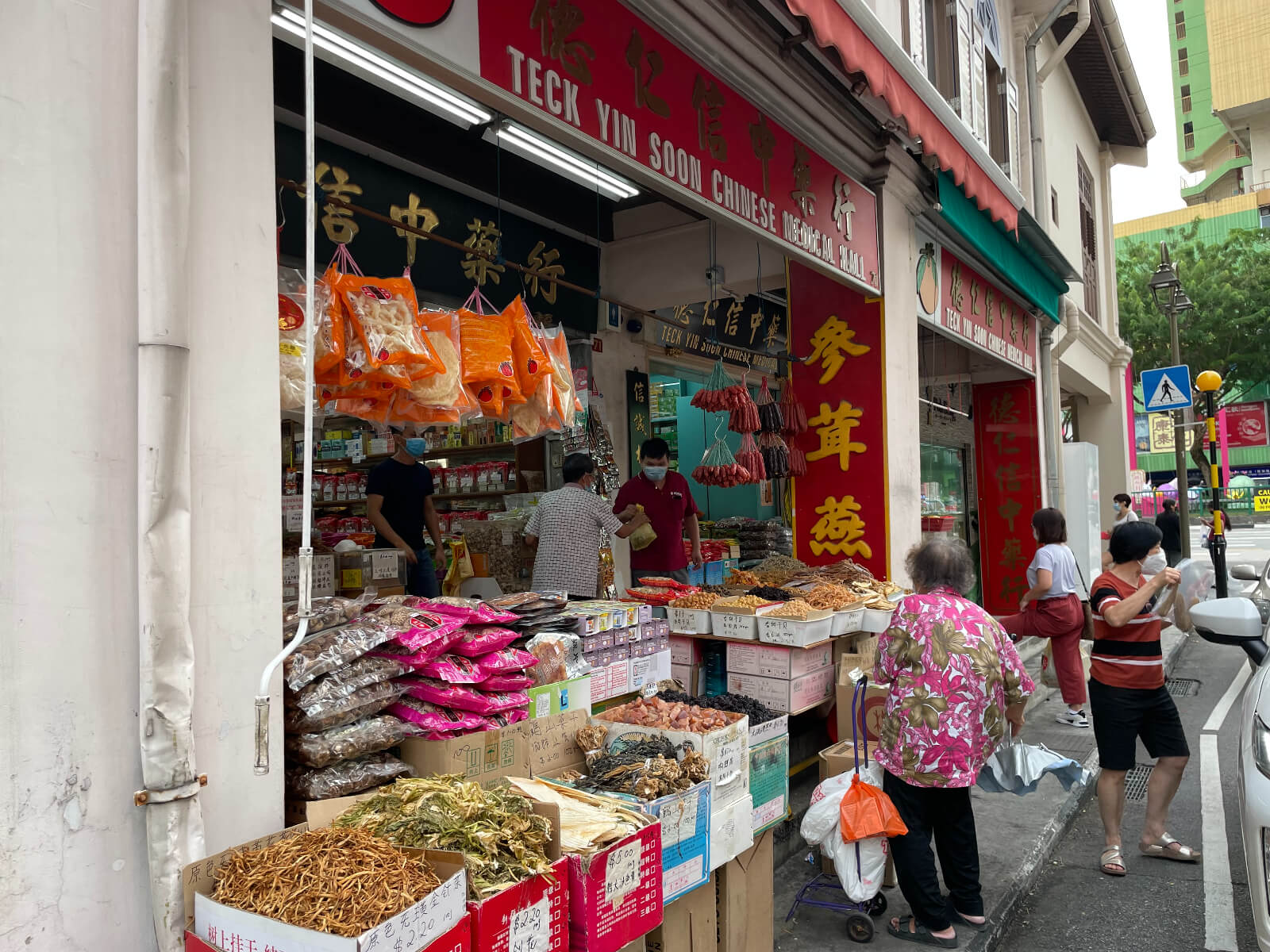
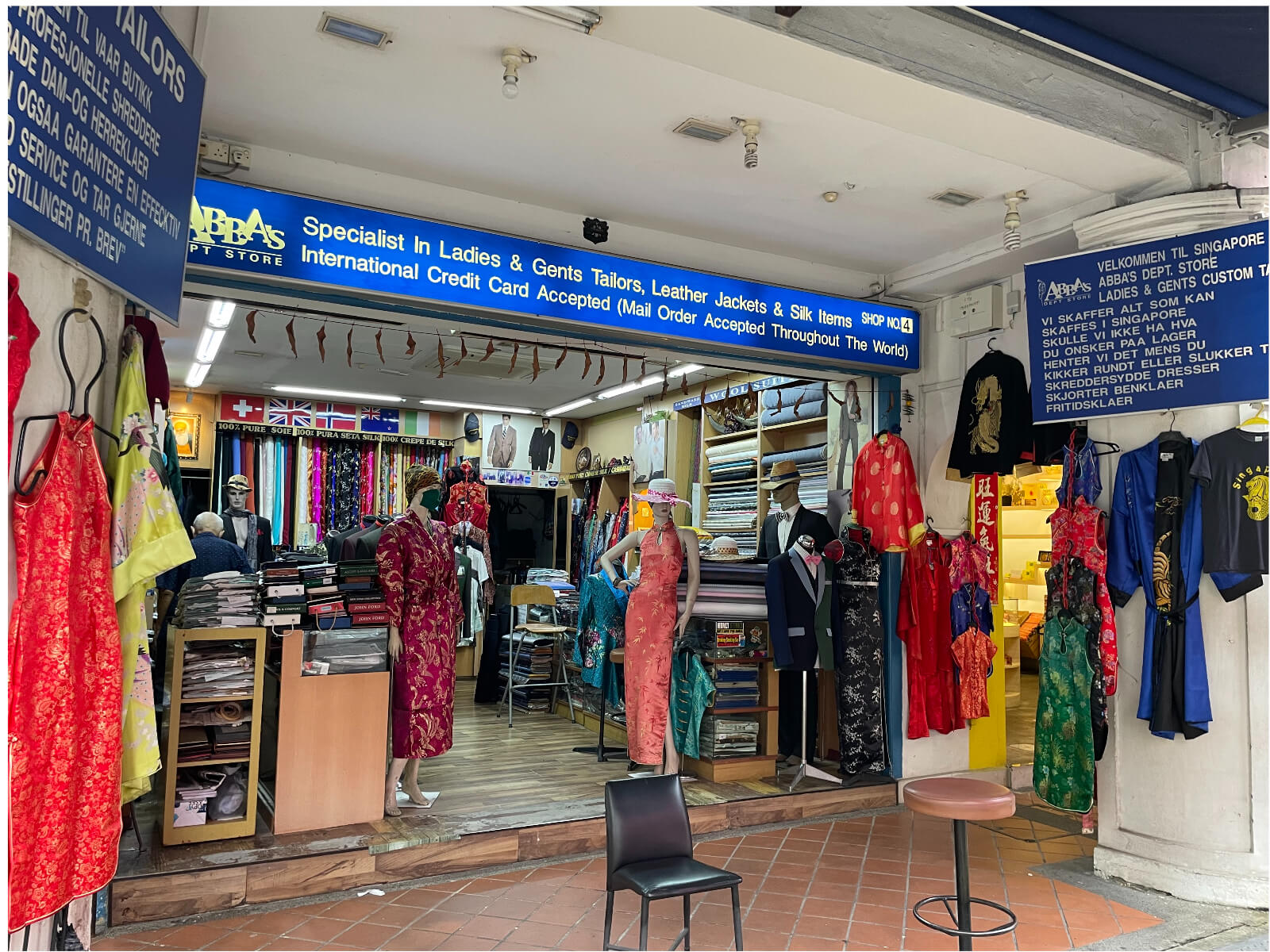
Below, we share some of the top things to do if you happen to find your way into Singapore’s Chinatown.
1. Snap pictures of the murals.
Scenes of yore and other images of cultural significance decorate the walls of Chinatown’s streets and alleyways. Have your photos taken beside the murals, or take a picture for posterity, as some of them have been painted by celebrated artists. On our end, we were able to take photographs of three of the popular murals: Mid-Autumn Festival, Chinese Opera, and The Letter Writer by Yip Yew Chong.
These scenes of daily life in history depict tradespeople and neighborhood inhabitants. They’re symbolic of the life of the early settlers, and present the culture and history that many Singaporeans were born into today.
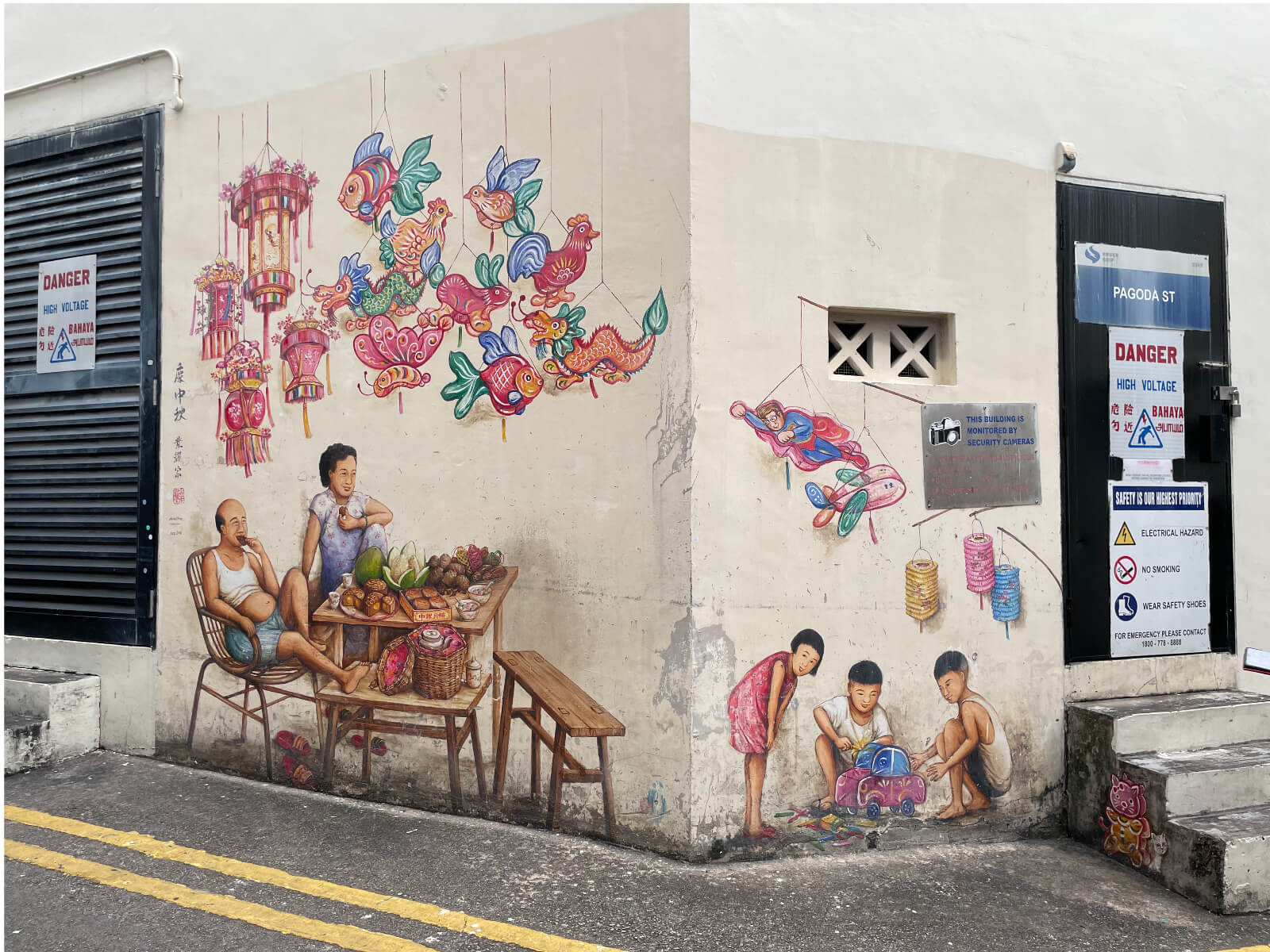
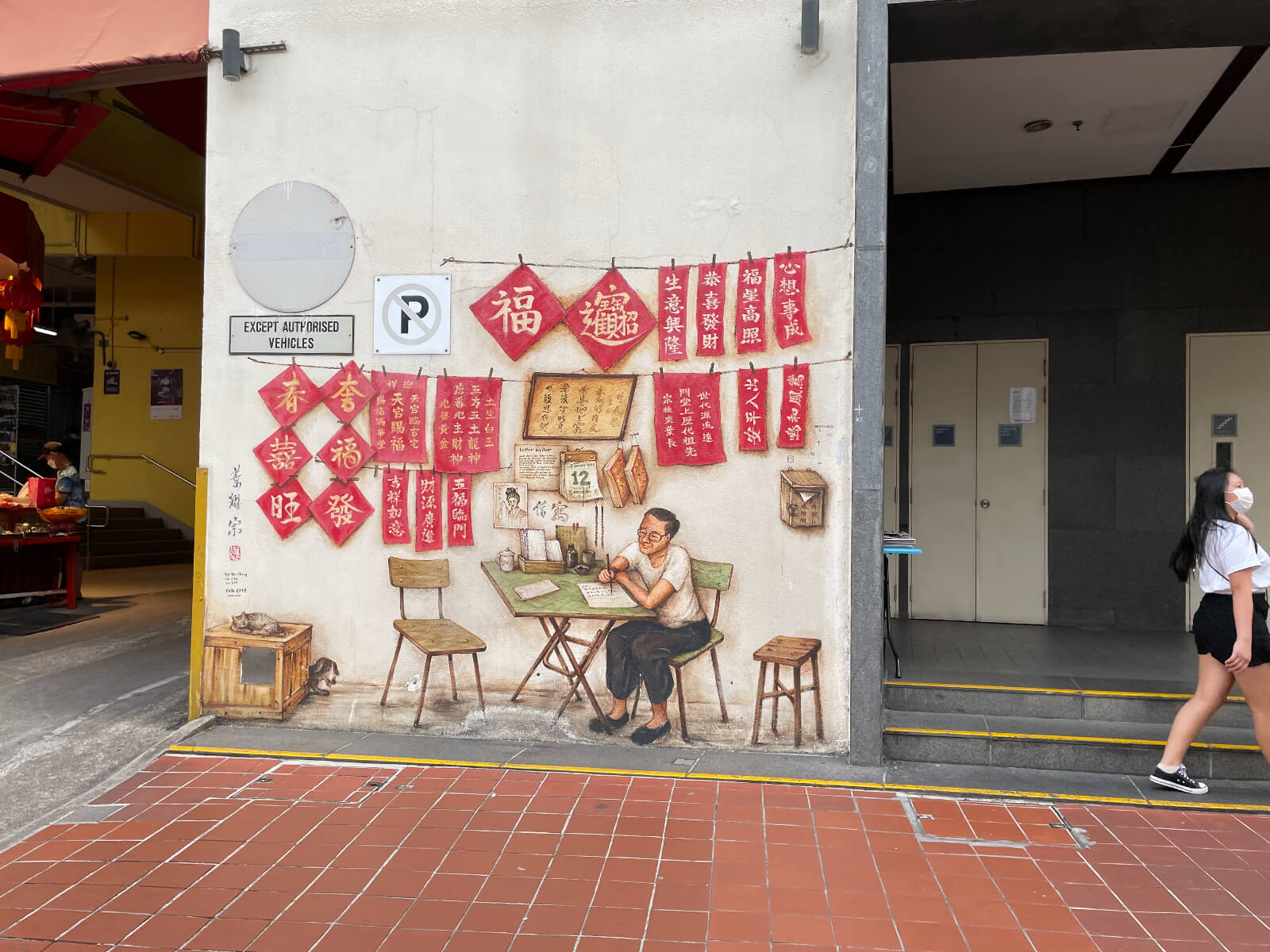
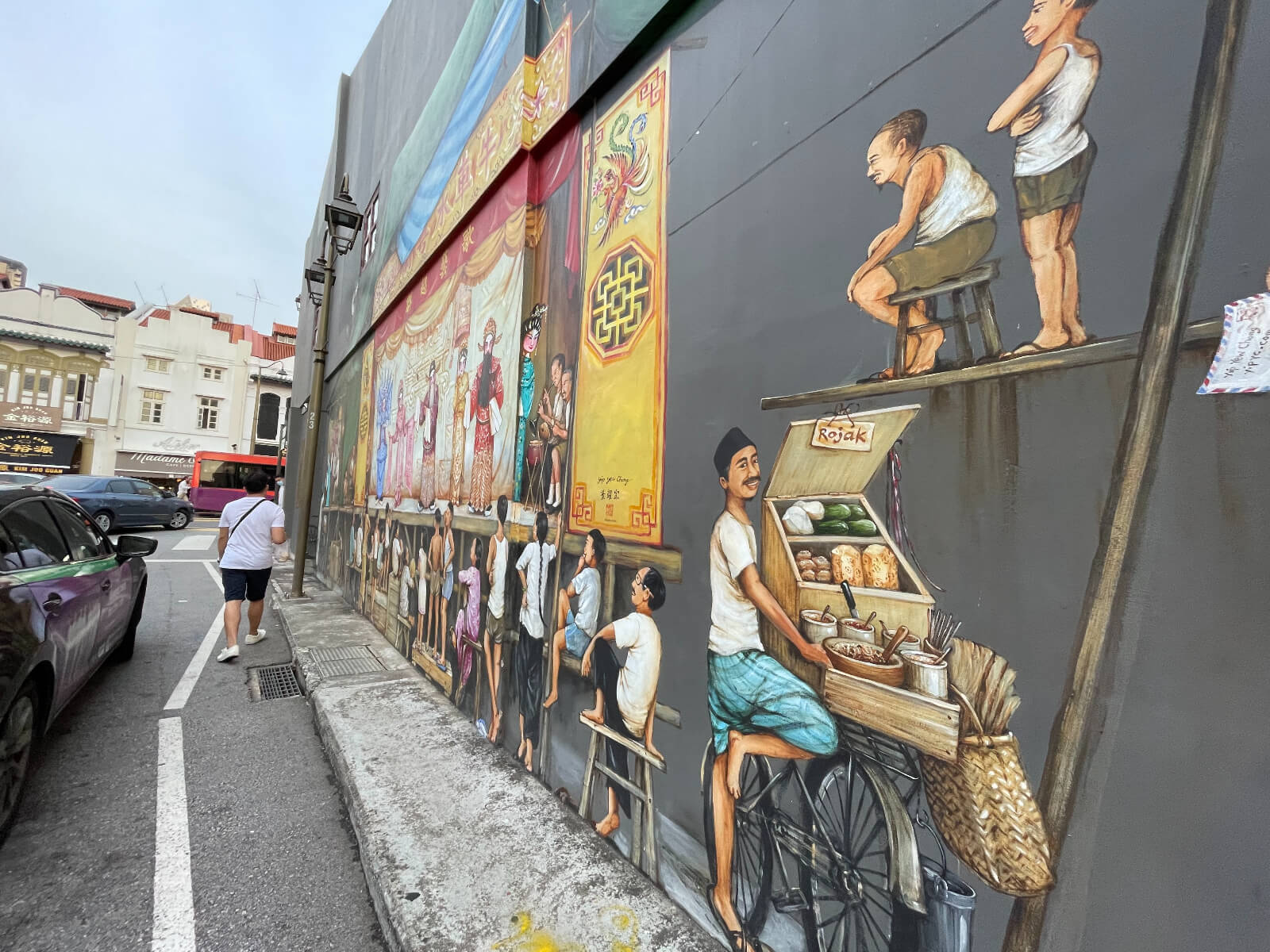
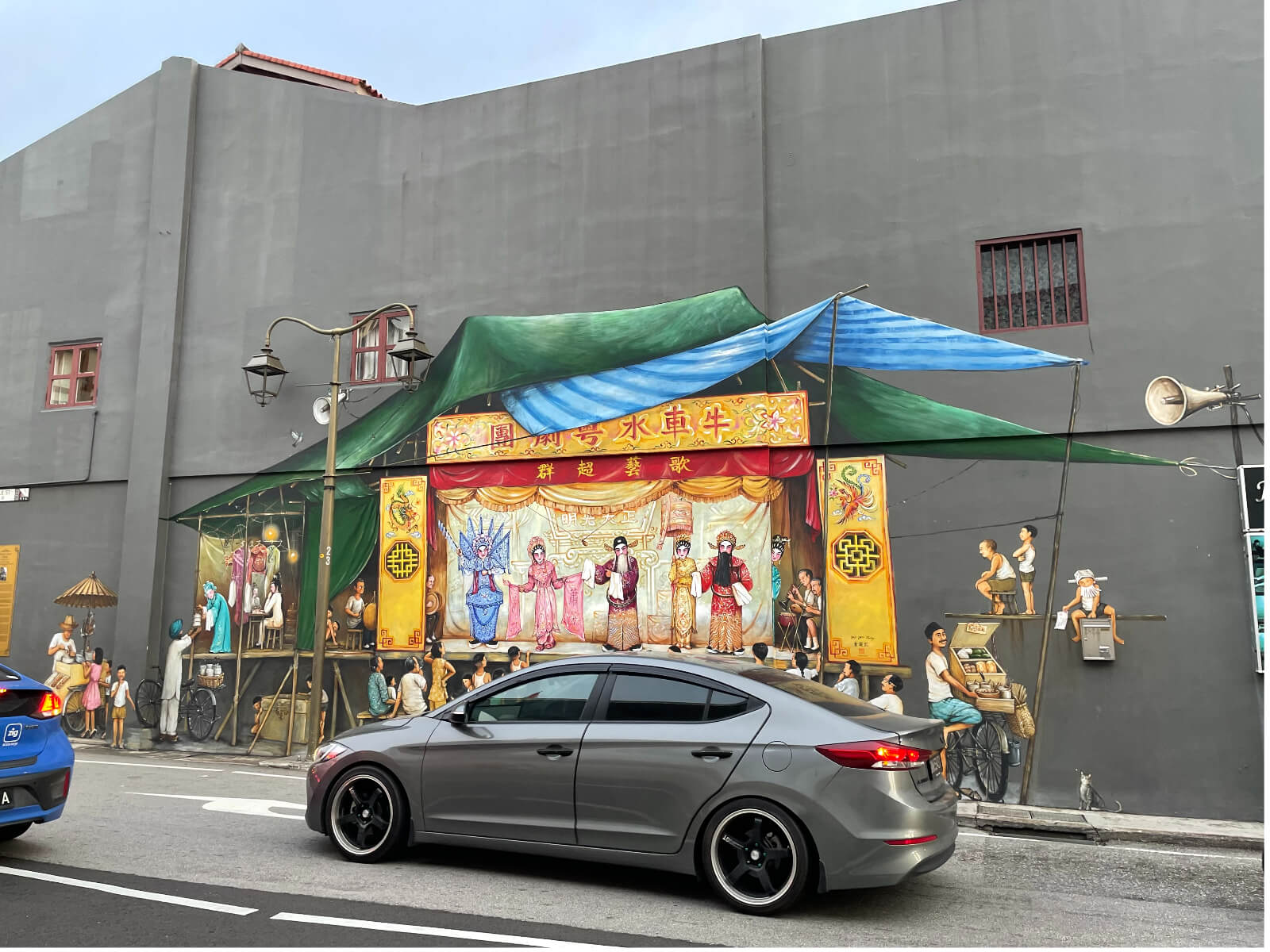
2. Explore Pagoda Street
Pagoda Street is the gateway for all visitors to retrace Chinatown’s colorful past. Here, you can find beautifully restored traditional shophouses, which many stores and restaurants have called their home. You can also find the Chinatown Heritage Centre here, but it is temporarily closed. Shop ’til you drop, or go on a culinary journey in this foodie paradise. I love walking around here, browsing the stalls, and just enjoying the ambiance of this vibrant street market.
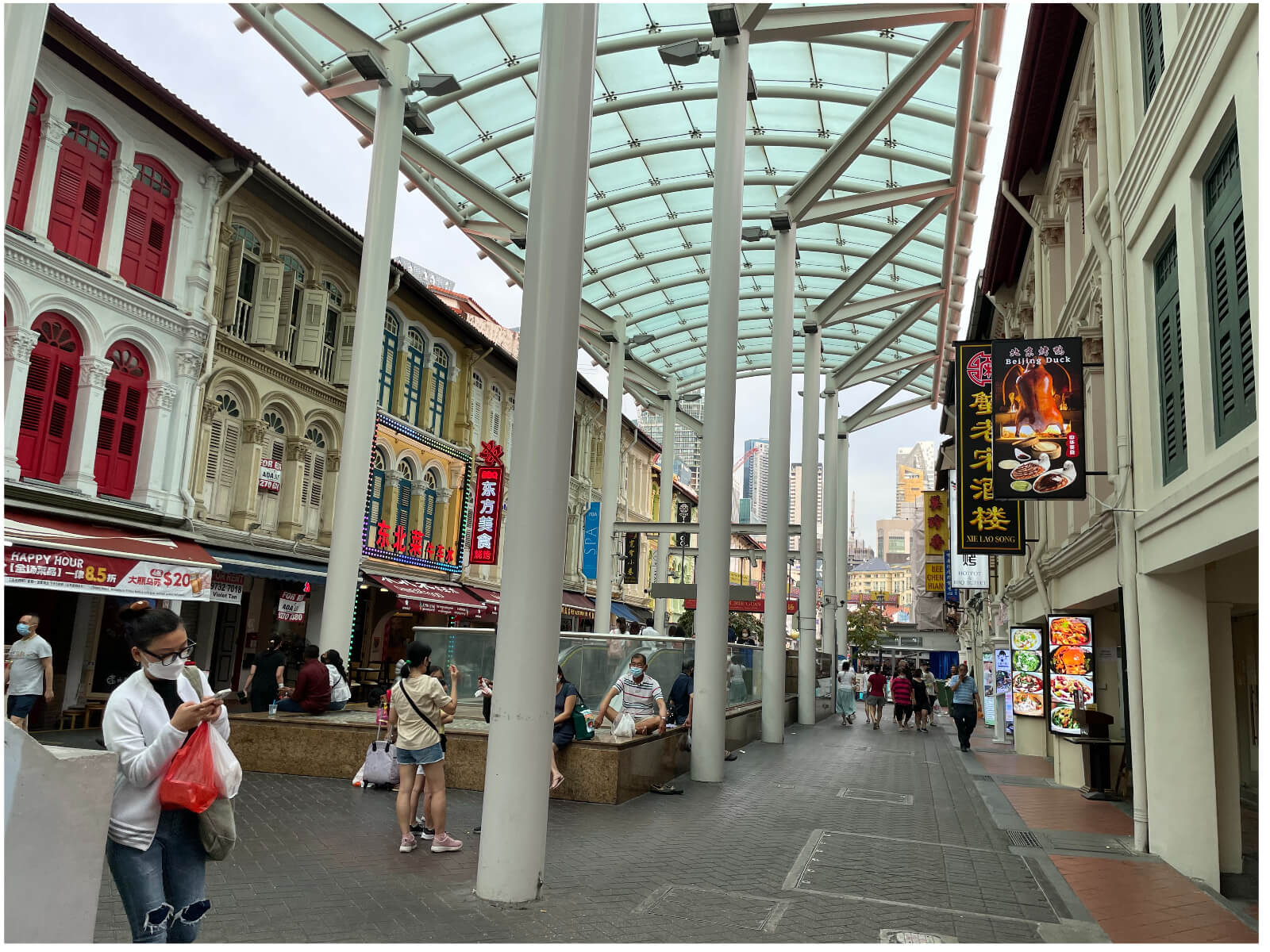
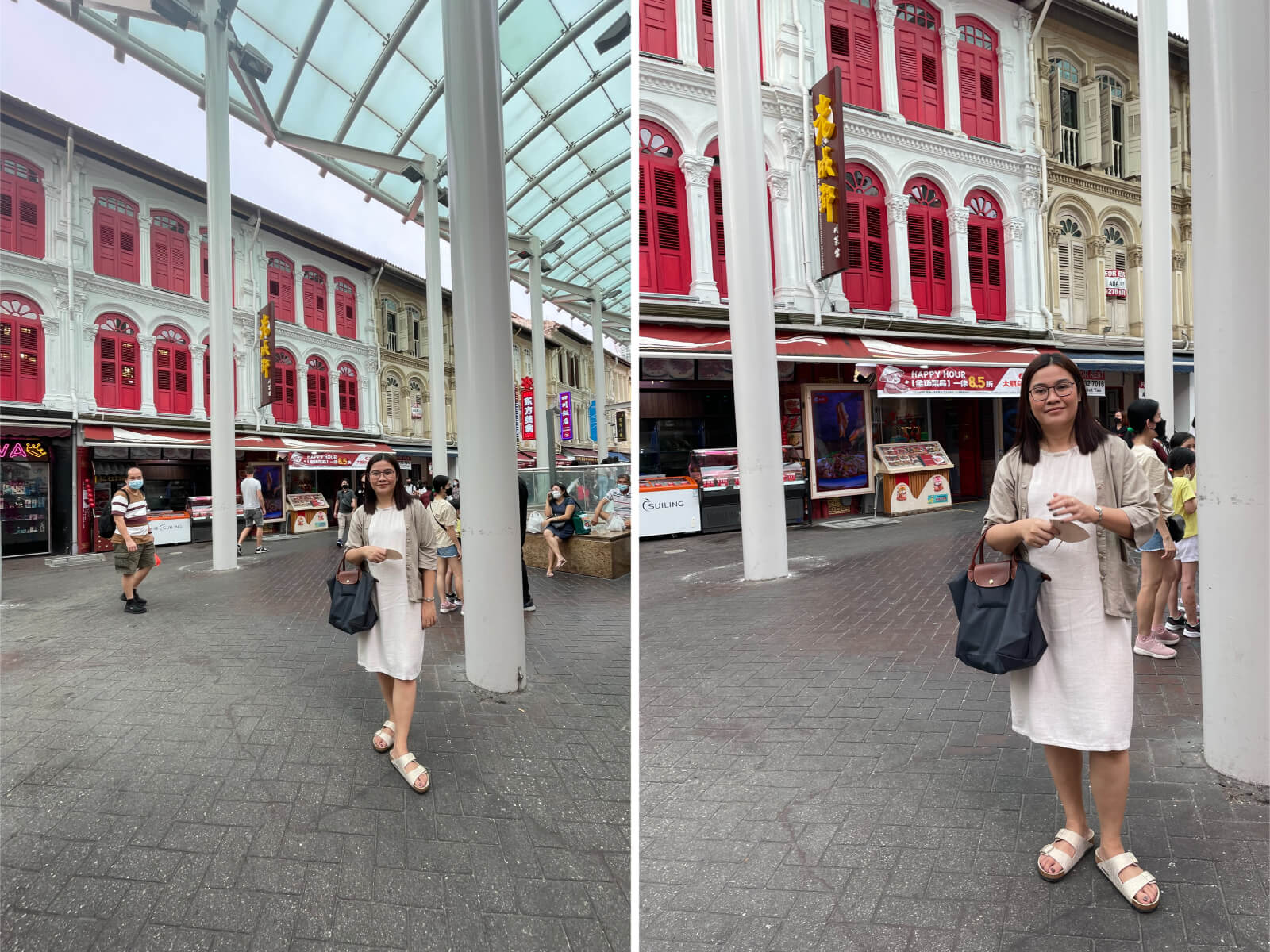
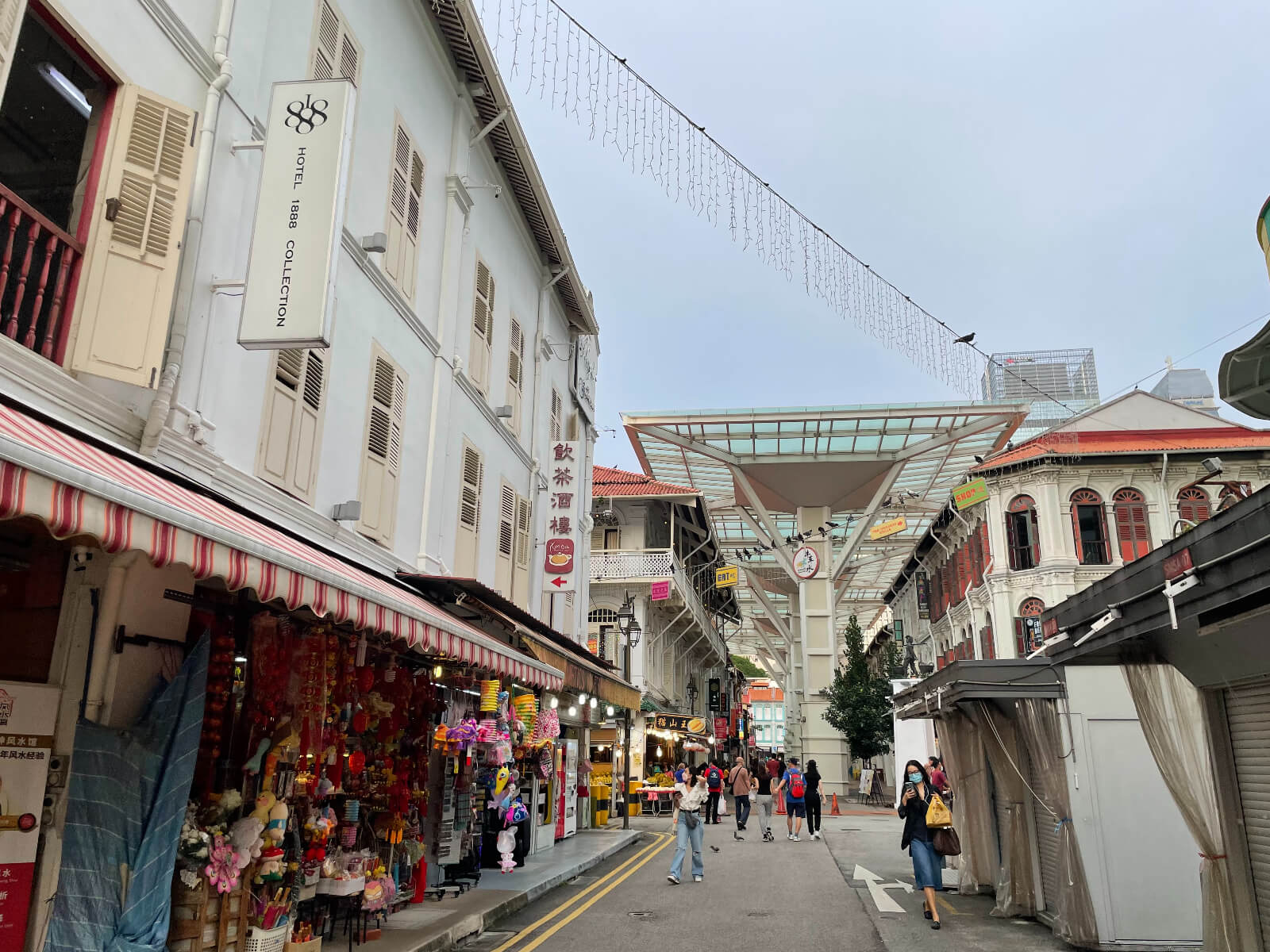
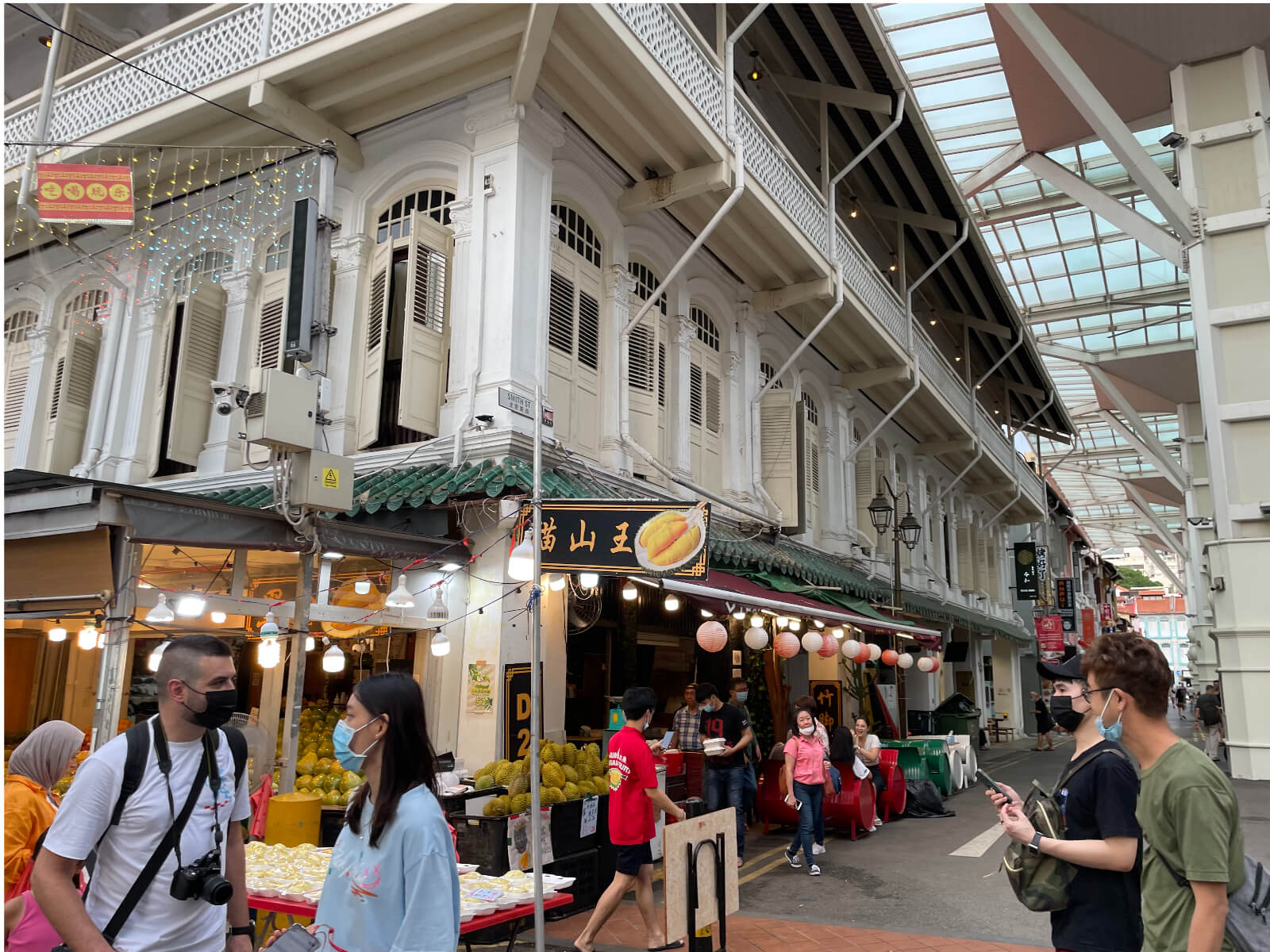
3. Visit the Sri Mariamman Temple
The Sri Mariamman Temple is an ornate 19th century temple situated in downtown Chinatown. It is the oldest Hindu temple in Singapore, and was built in the Dravidian style. Because of its historical significance and cultural heritage, the temple has been assigned as a National Monument, and is currently being managed by the Hindu Endowments Board.
The gopuram of the Sri Mariamman Temple is hard to miss, and as a major tourist destination, it is easily recognizable due to the crowds of people entering and leaving its ingress. Expect to spend 30 minutes or an hour exploring the temple and people-watching.
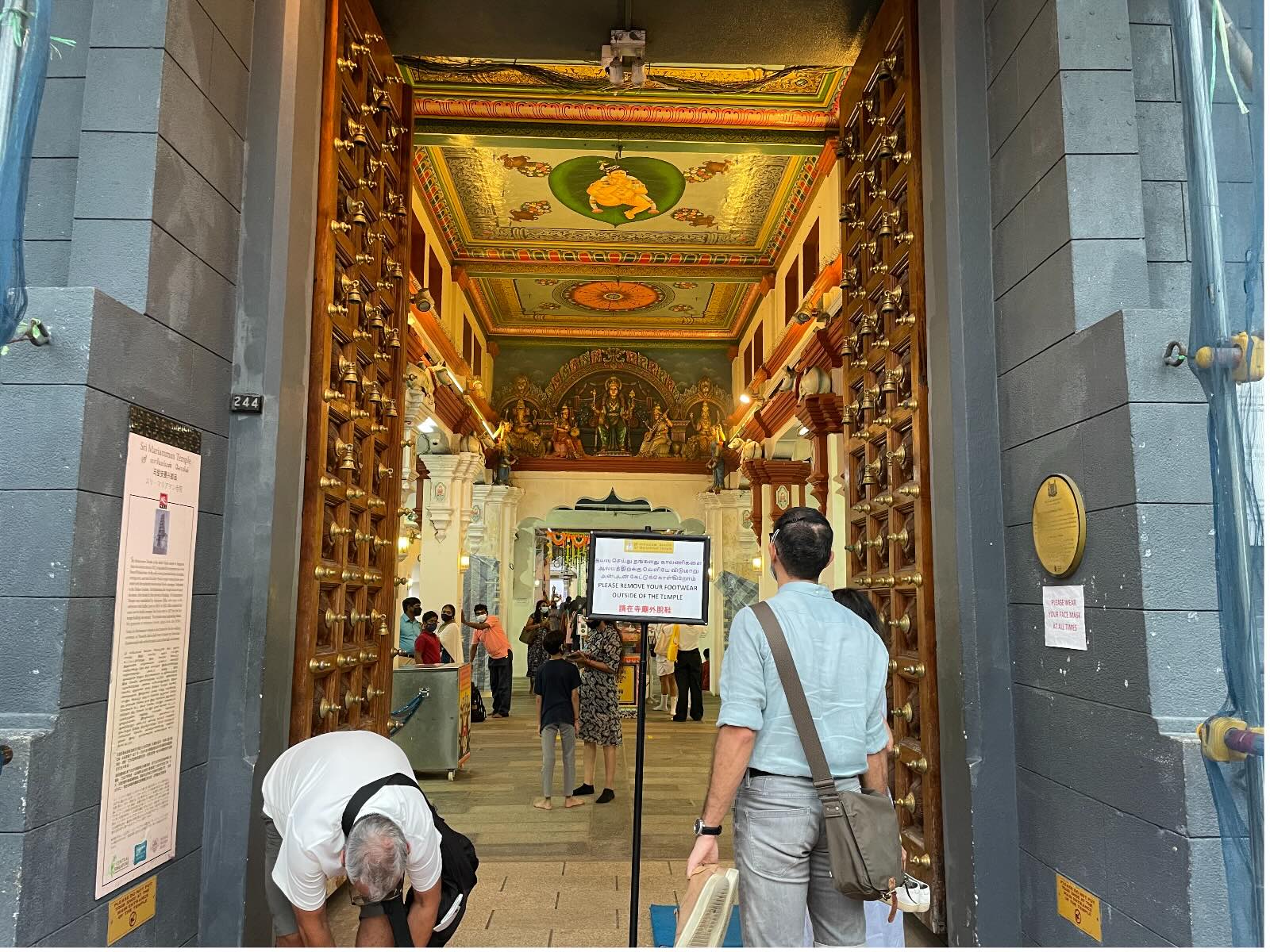
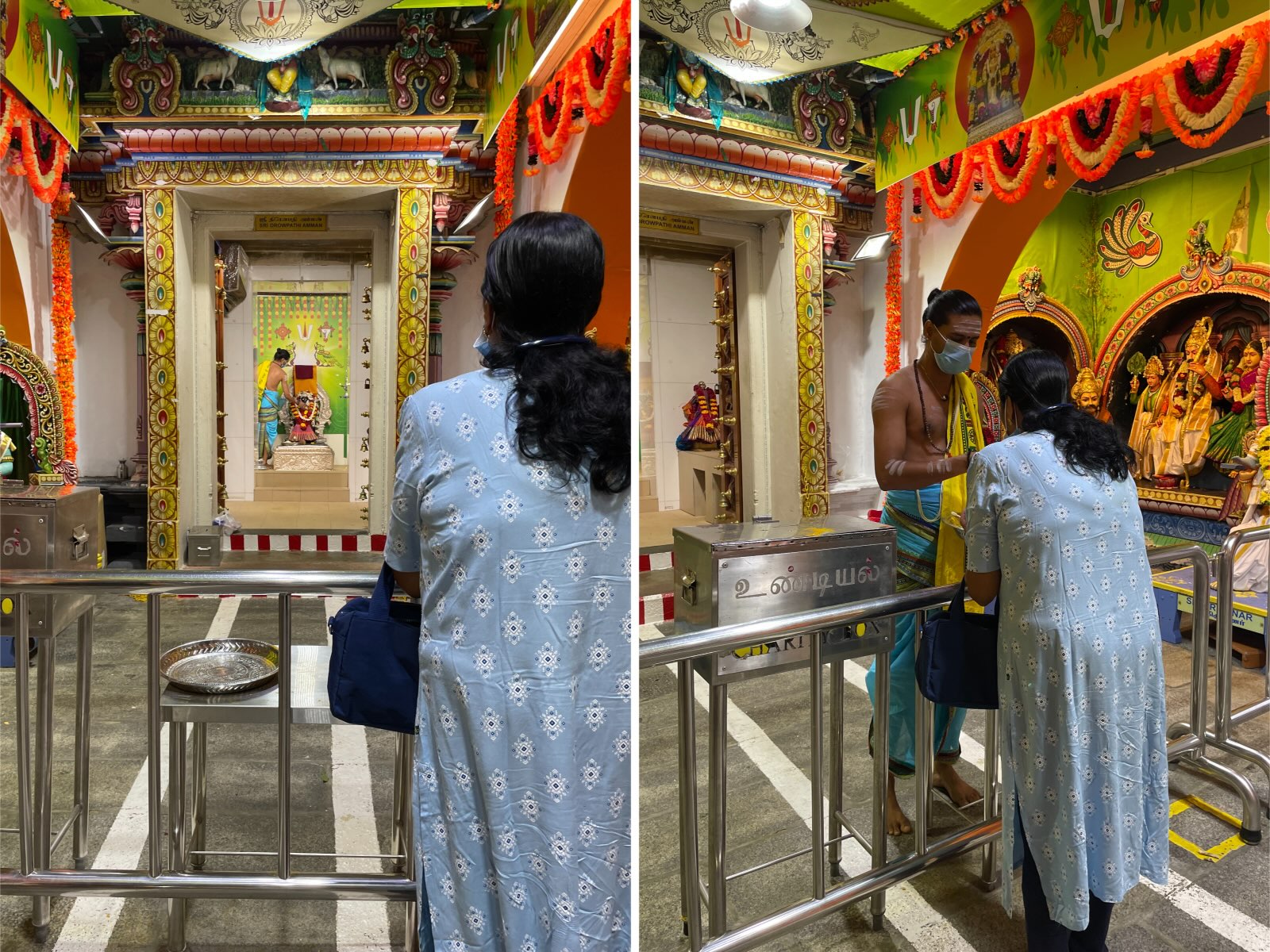
4. Have lunch at Hawker Chan.
Hawker Chan started as a humble food stall in 2009 in Chinatown Complex Food Centre. Back then, before it was rebranded, it was called Liao Fan Soya Sauce Chicken & Rice Noodle, and served soya sauce chicken as its specialty.
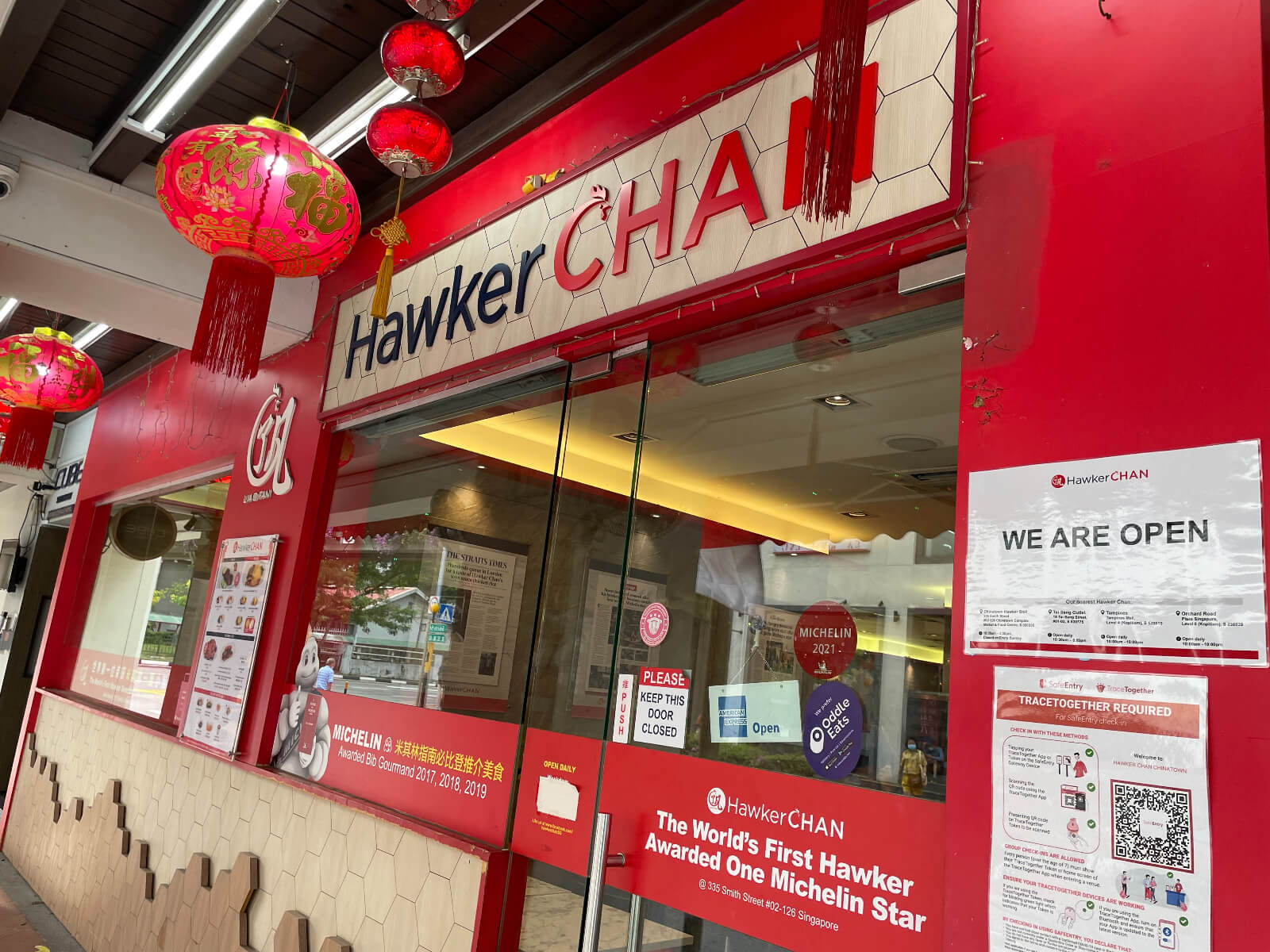
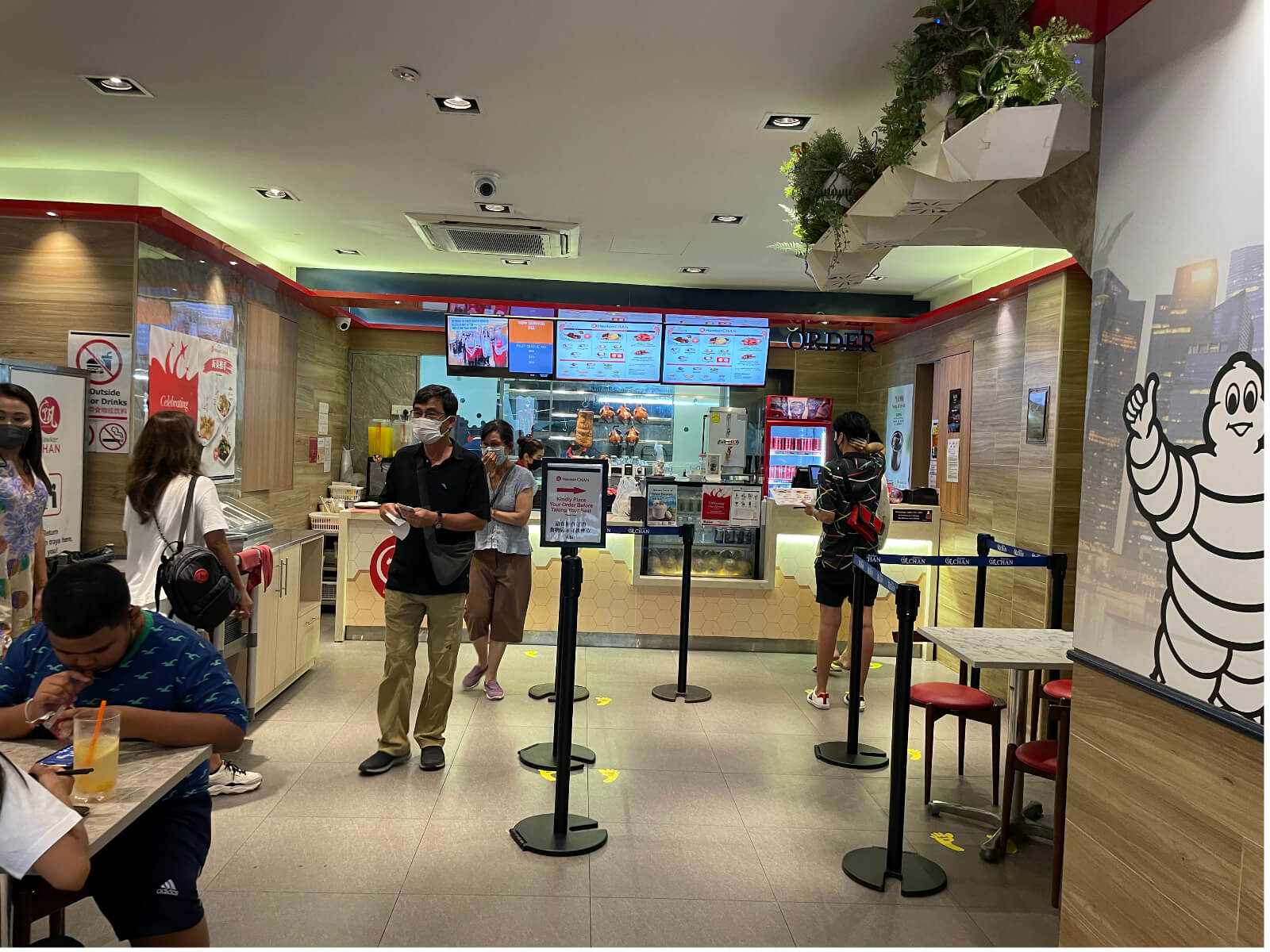
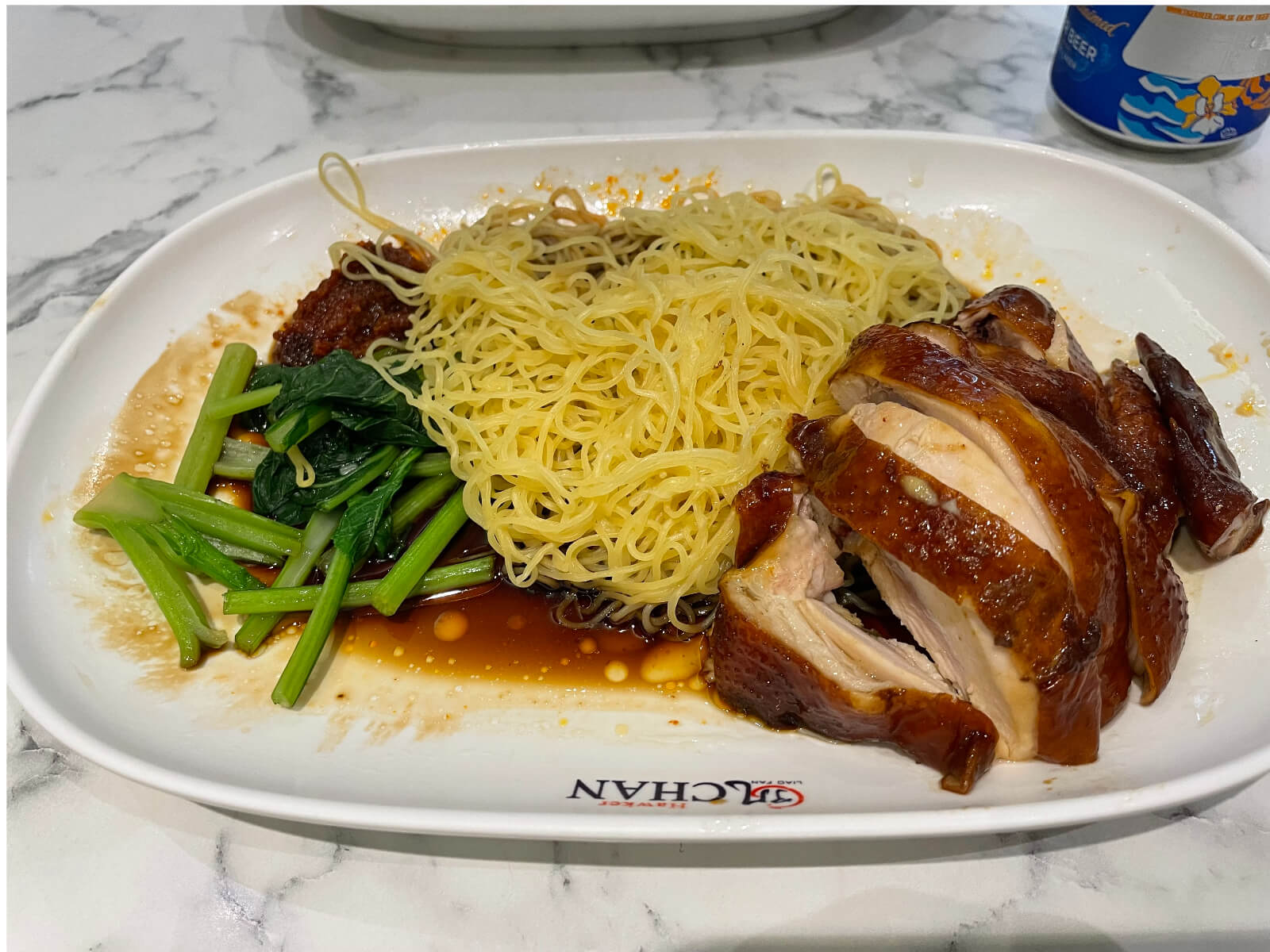
Hawker Chan was founded by Chef Chan Hon Meng, a Malaysian who immigrated to Singapore when he was 15 years old. He honed his culinary skills as an apprentice under a Hong Kong chef, when he developed his original soya sauce chicken recipe. In July 2016, the chicken recipe was recognised by the Michelin Guide as “The World’s First Hawker Michelin-starred Meal” and “The Cheapest Michelin-starred Meal in the World.”
The one Michelin star award brought the restaurant international acclaim, and soon it was franchised and brought to the global stage by Hersing Culinary. Currently, Hawker Chan has 30 franchised restaurants in 8 locations.
If you’re in Chinatown, Hawker Chan is a must visit if you want to try the restaurant’s authentic and iconic dishes. It is located at 78 Smith Street and it’s open from 10:30 am to 8:00 pm.
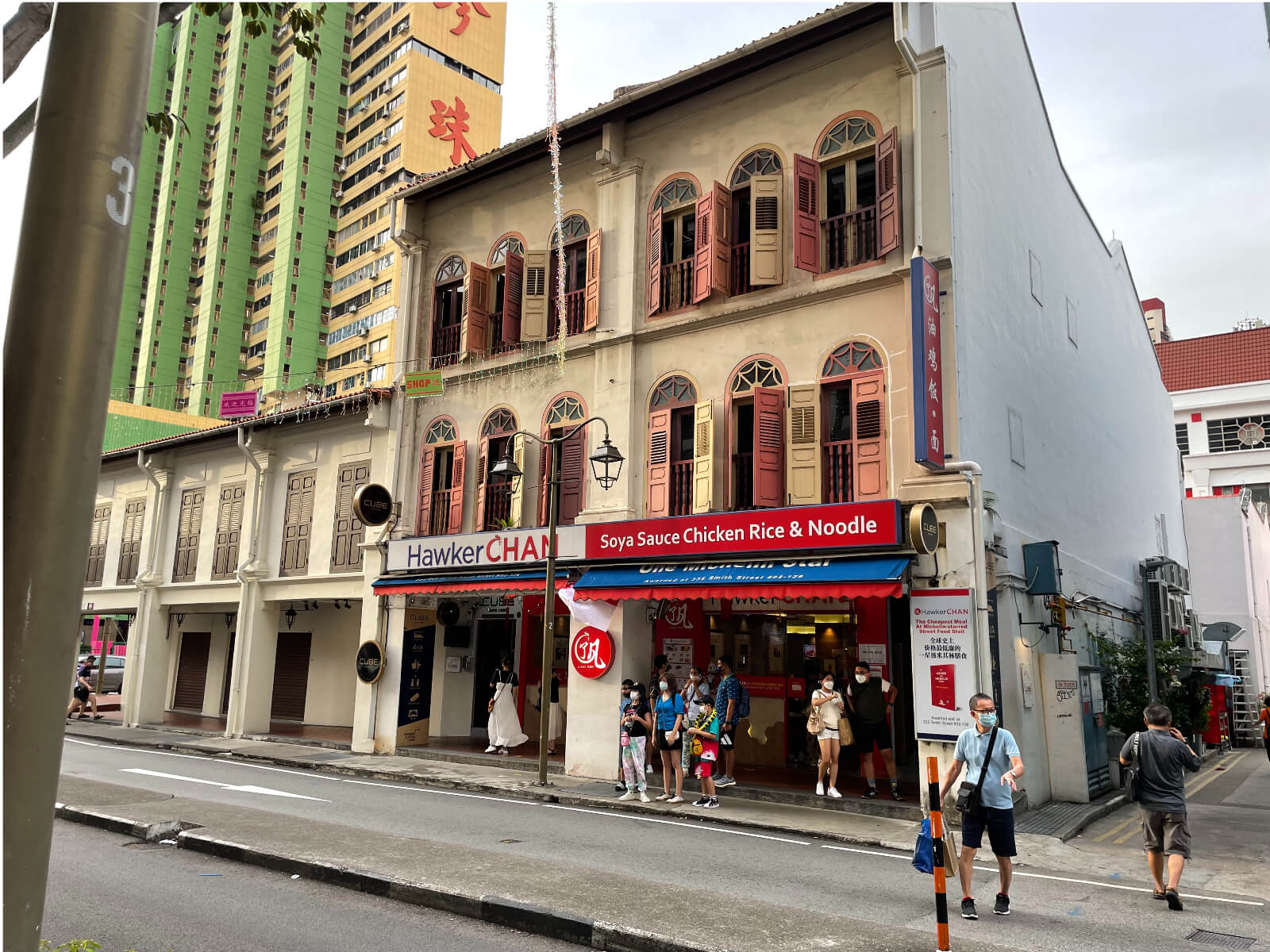
5. Shop for Precious Gems and Feng Shui Trinkets.
Not far away from Hawker Chan is the Chinatown Complex, where you can find affordable souvenirs to remember your trip by. Are you a gem collector like me? Well, you’re in the right place. There’s no shortage of stalls and small businesses selling traditional gem bracelets and jewelry here. I, myself, bought an egg-shaped, polished red agate stone from one of the stalls I’ve visited.
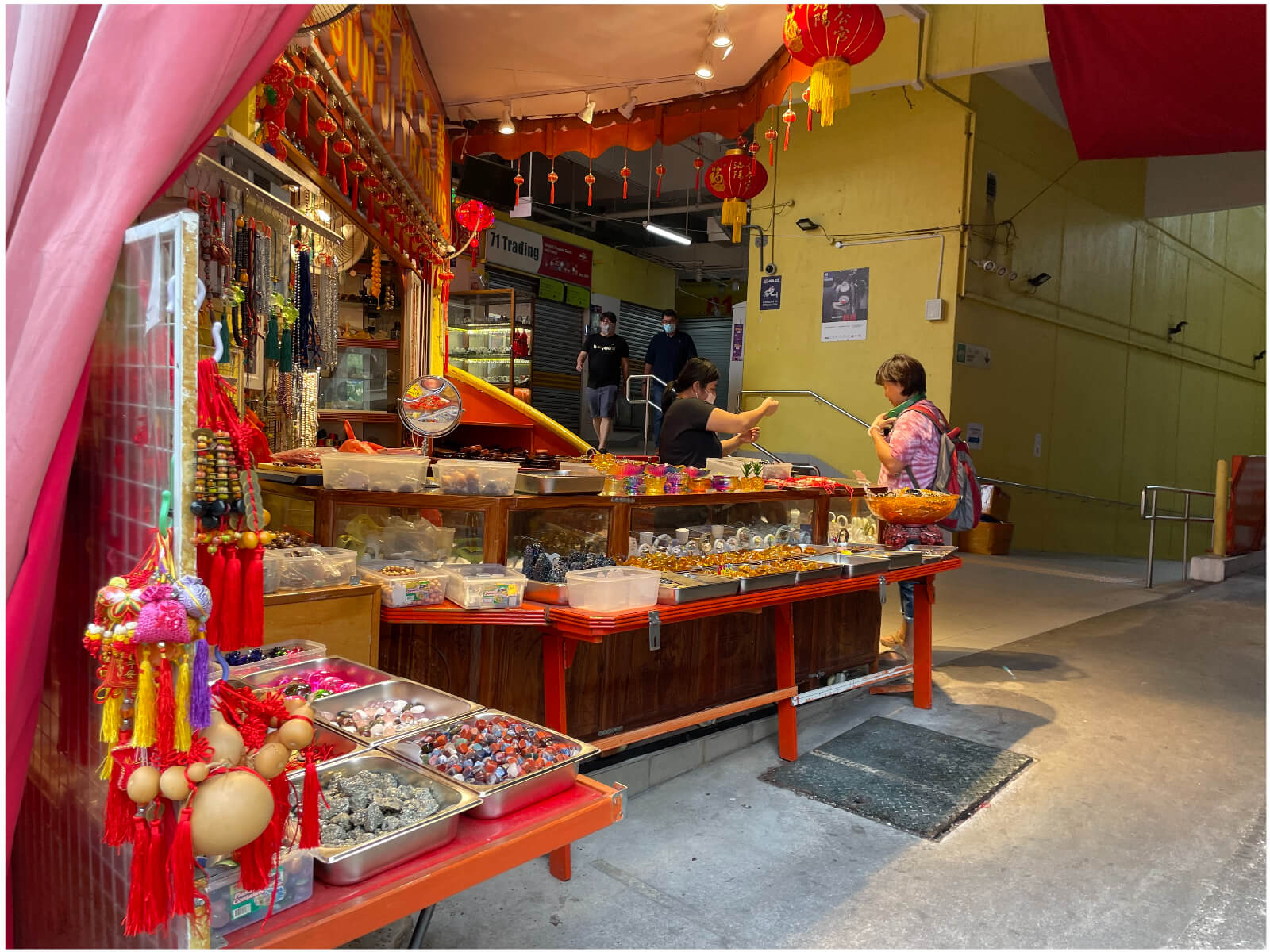
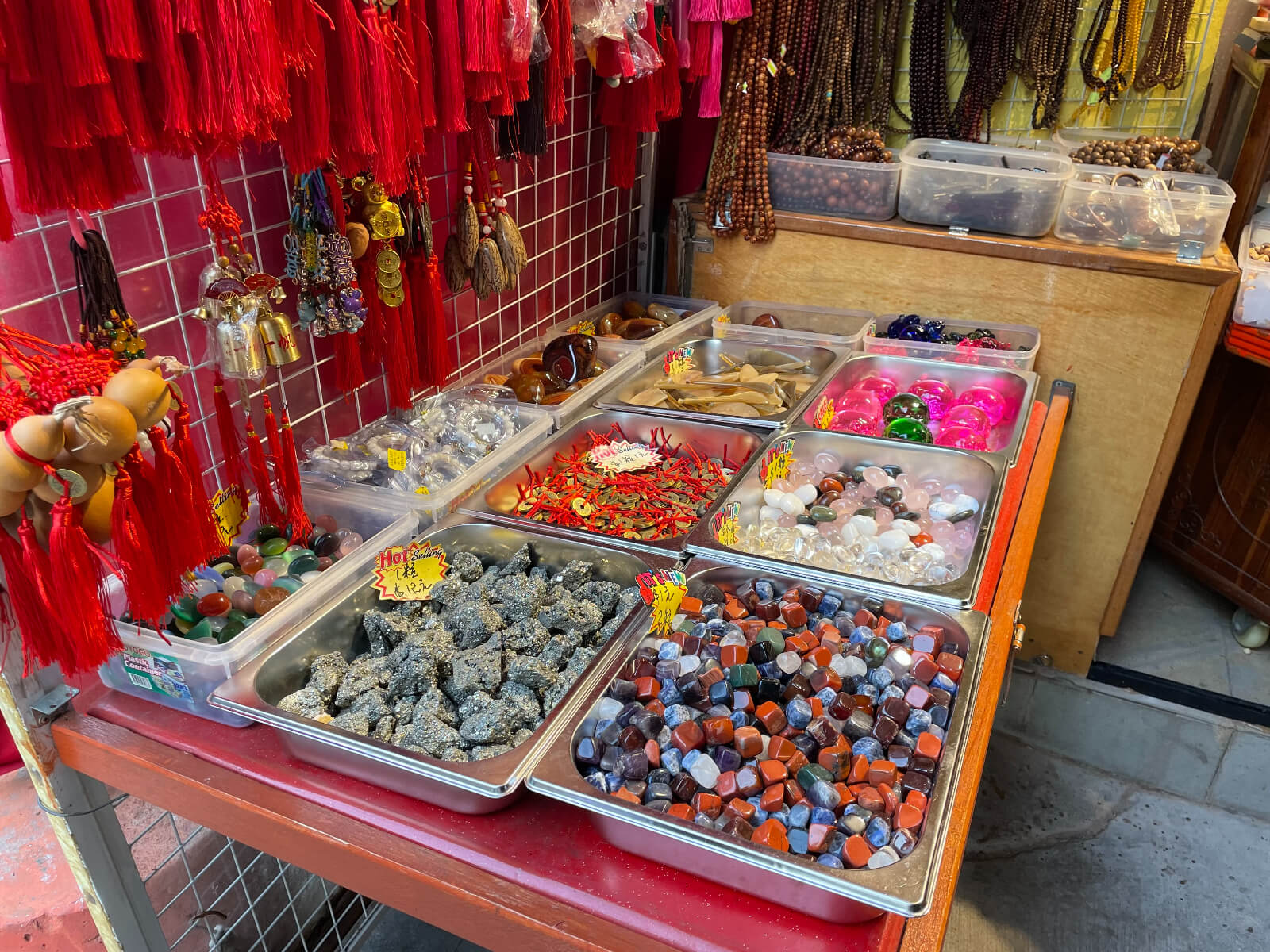
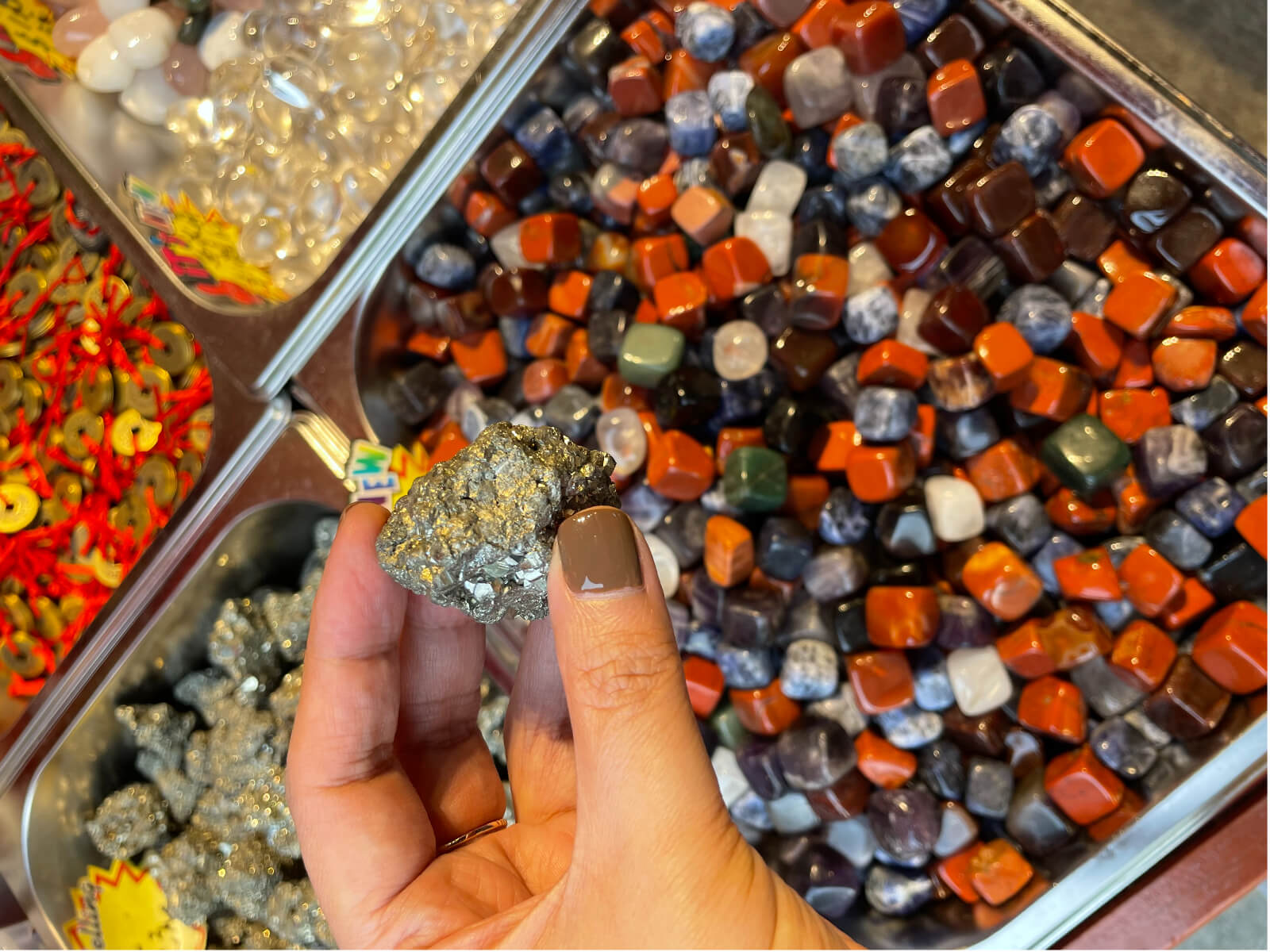
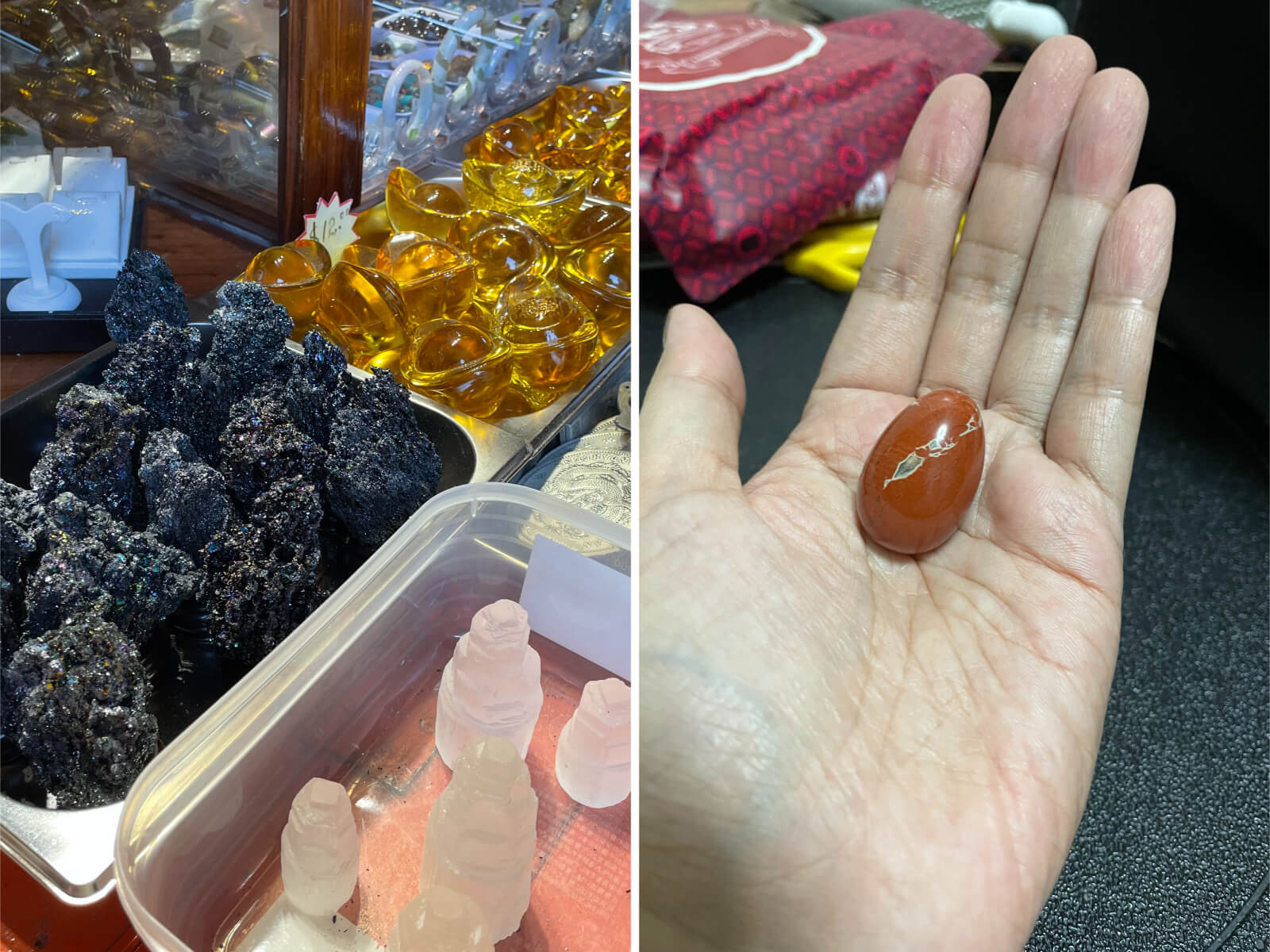
If you’re also into feng shui, you can also find feng shui ornaments and figurines for your home here. Another good location to shop for gems and feng shui collectibles is the Chinatown Street Market, also along Smith Street.
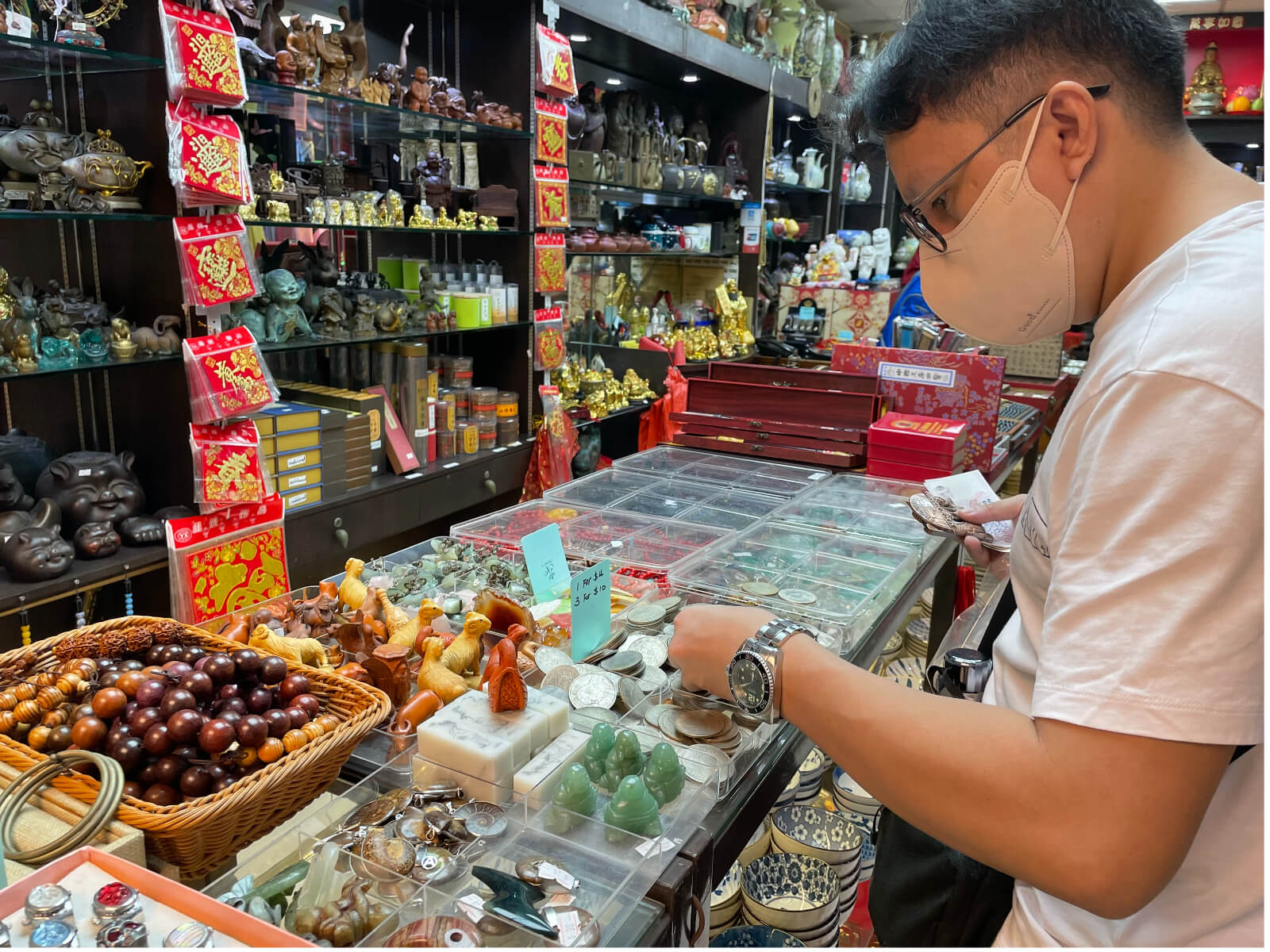
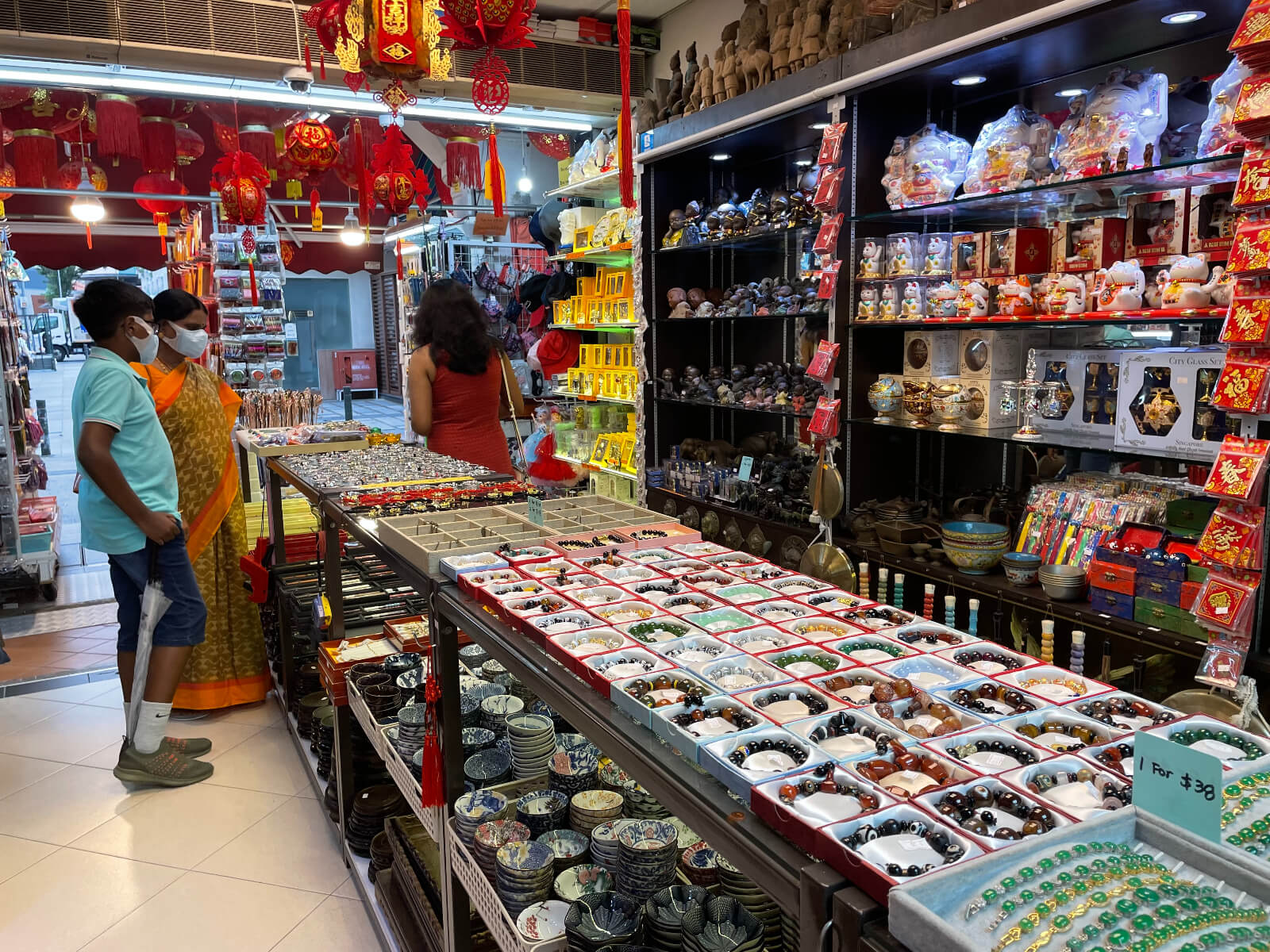
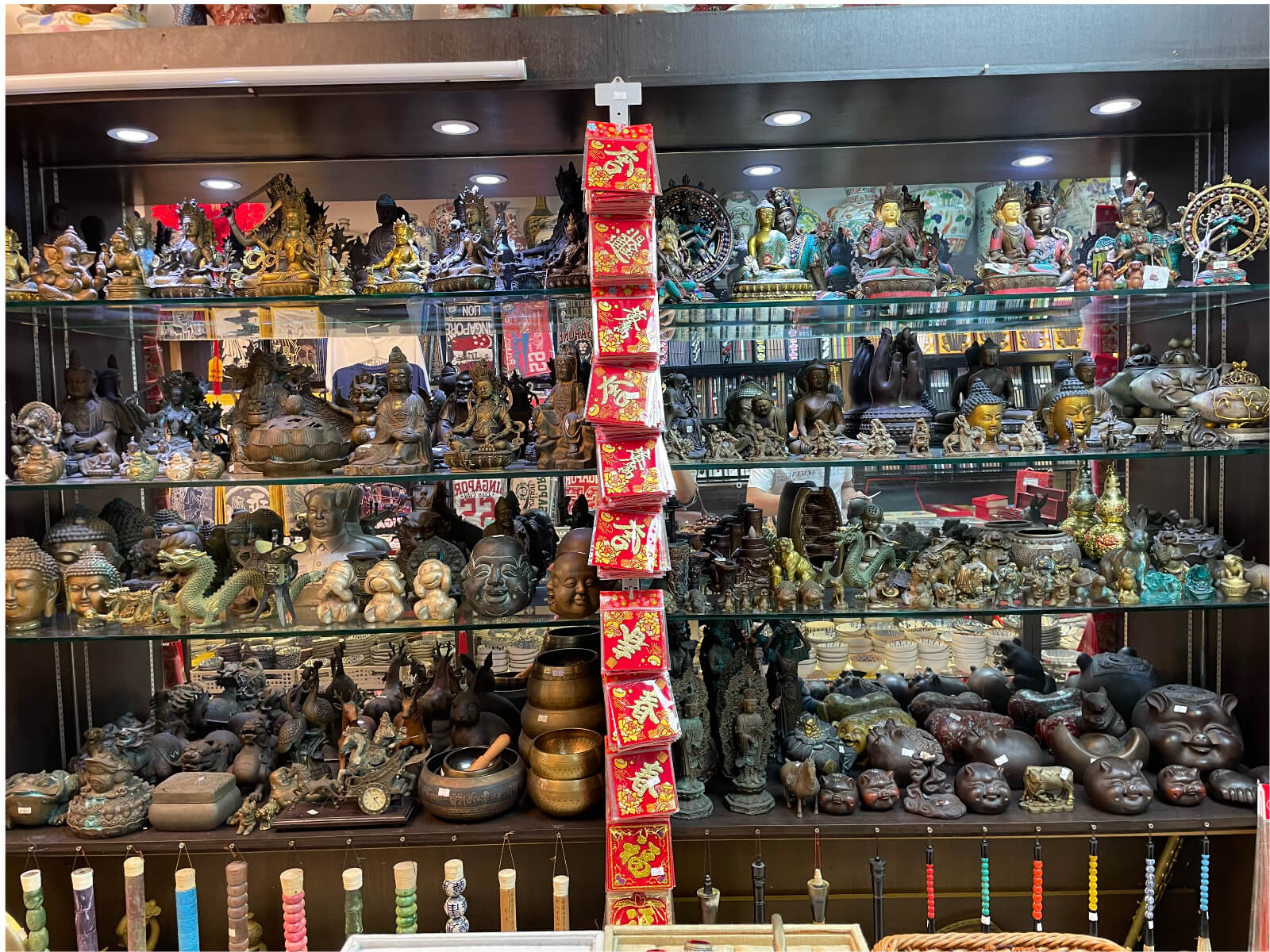
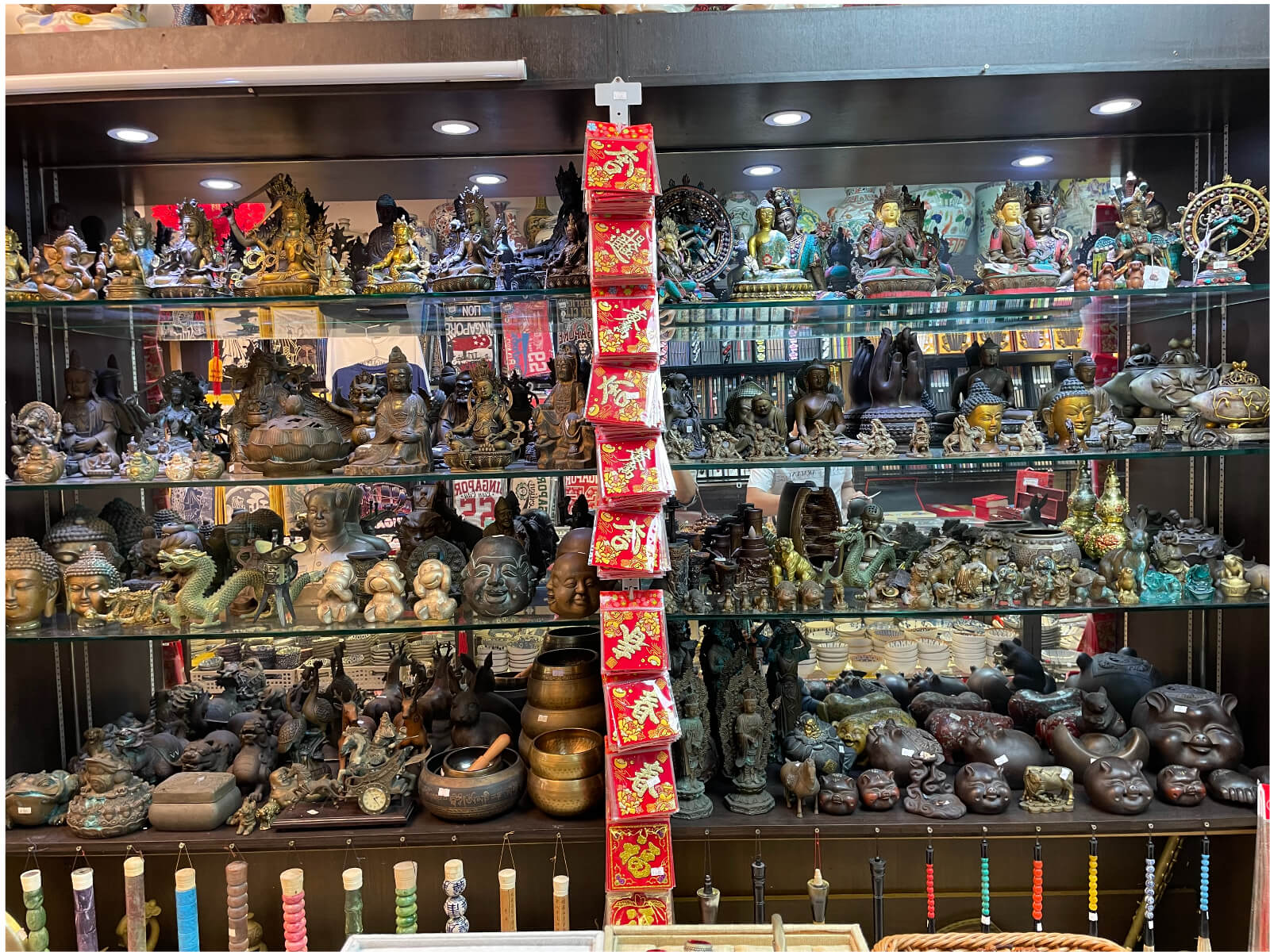
6. Visit the Buddha Tooth Relic Temple & Museum
The Buddha Tooth Relic Temple was built in 2007 and gets its name from the left canine tooth of Buddha. The tooth was said to have been recovered from Buddha’s funeral pyre in India. According to the Visit Singapore website, the construction of the Tang architecture-inspired Chinese Buddhist temple cost SGD $75 million.
The temple houses two museums where sculptures, paintings and textiles are shown. It is also home to several prayer halls where sacred relics are displayed. Unfortunately, it was closed when we arrived so we just took a picture there and explored the nearby souvenir shops.
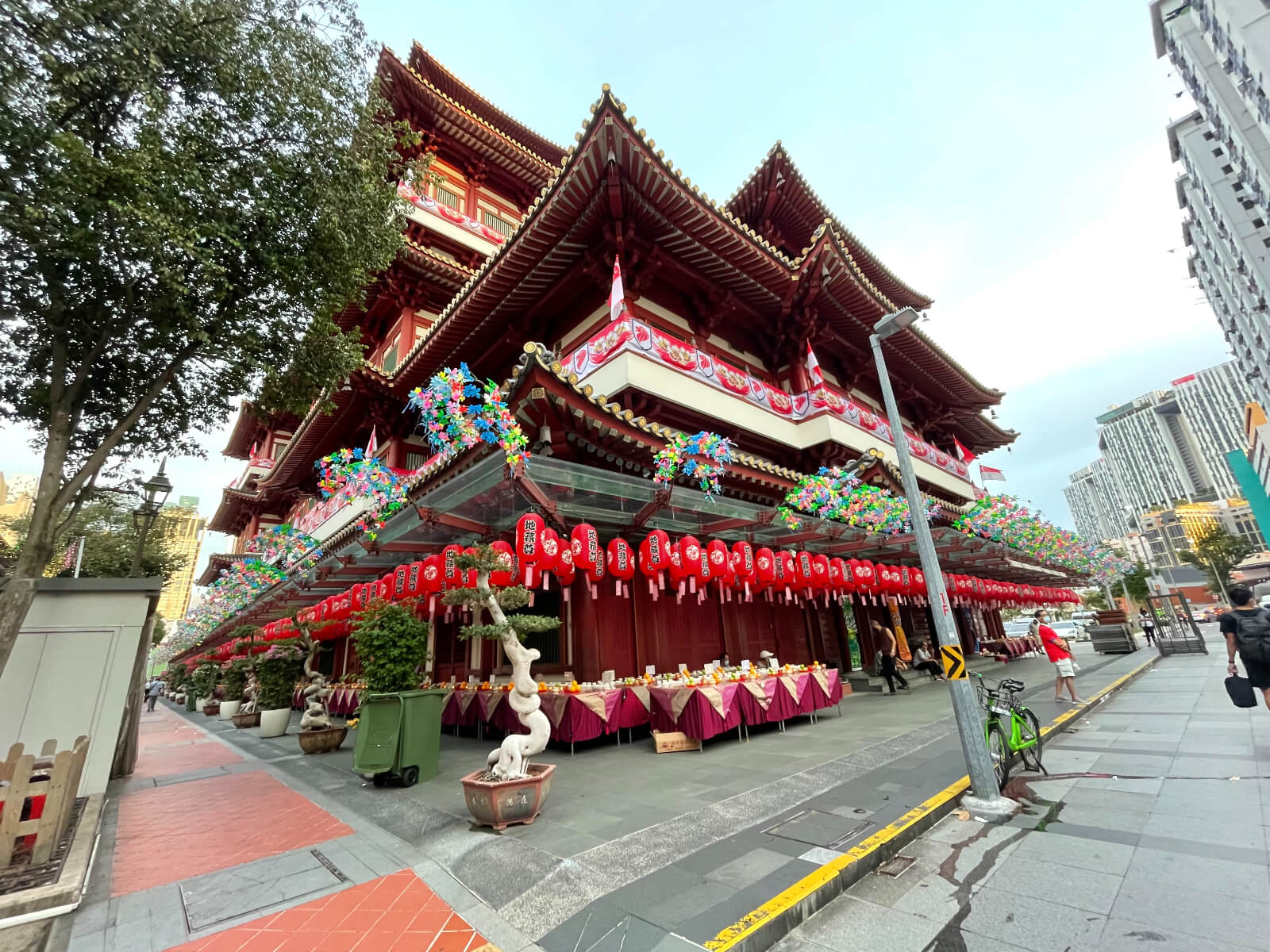
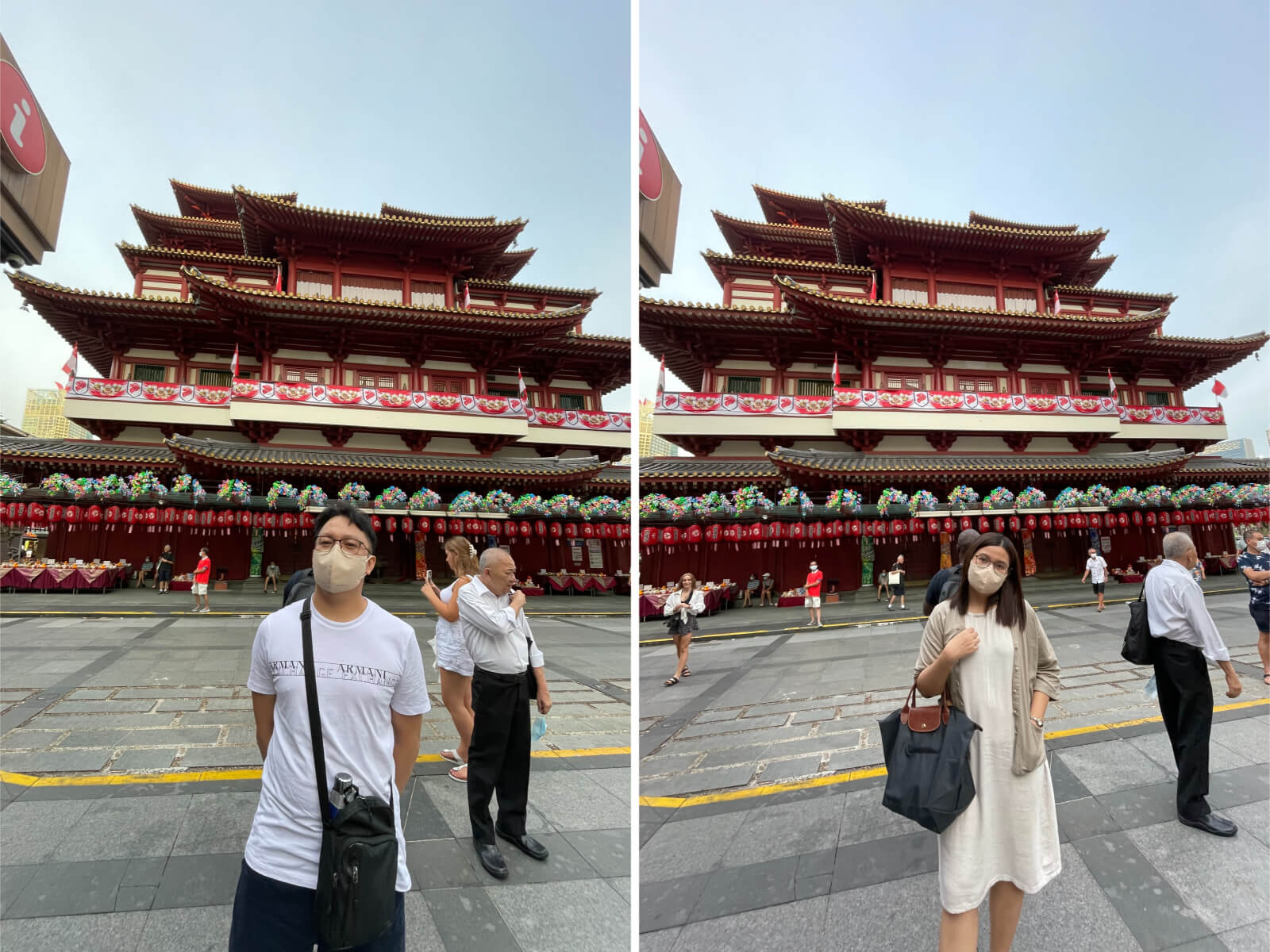
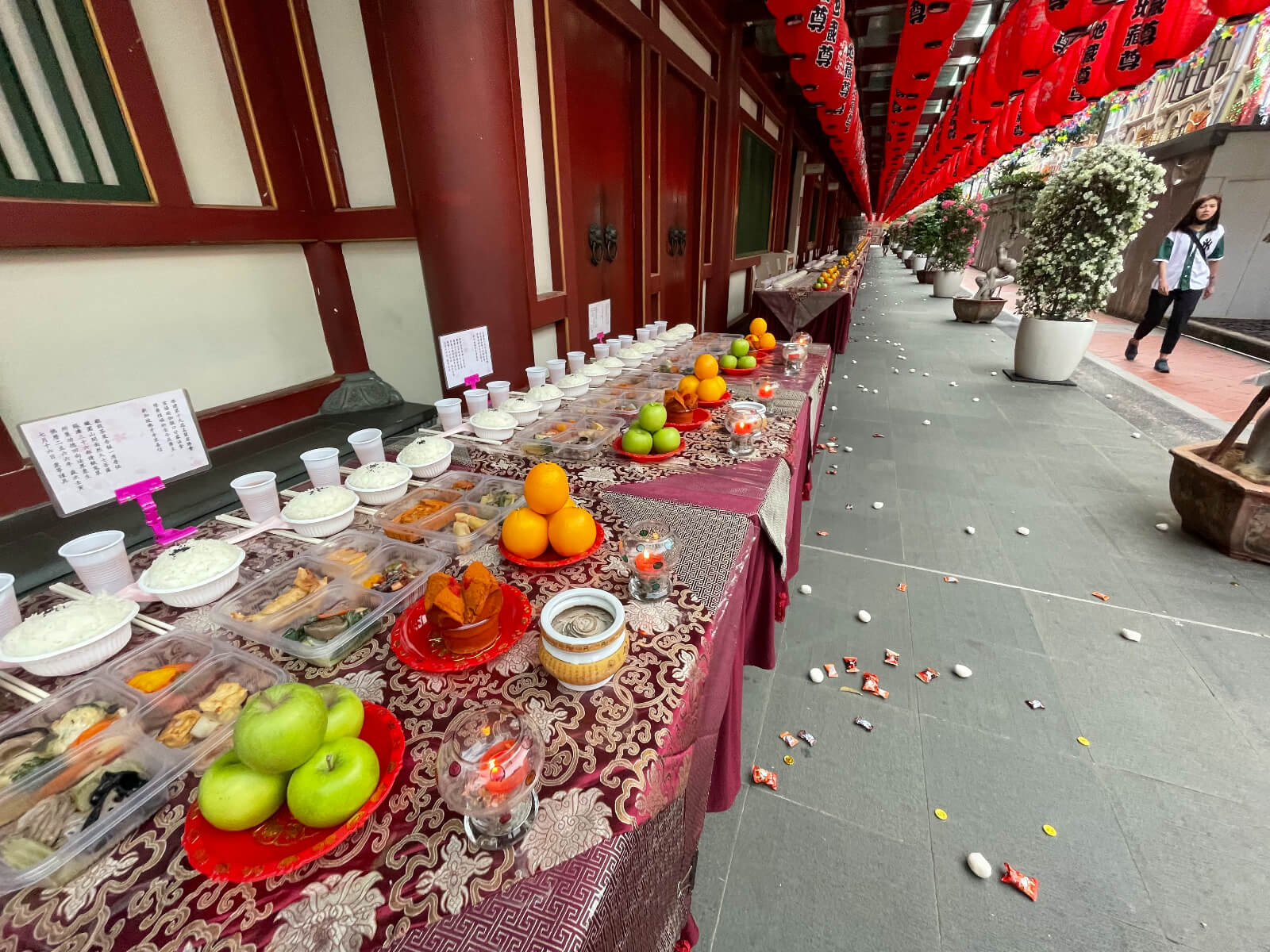
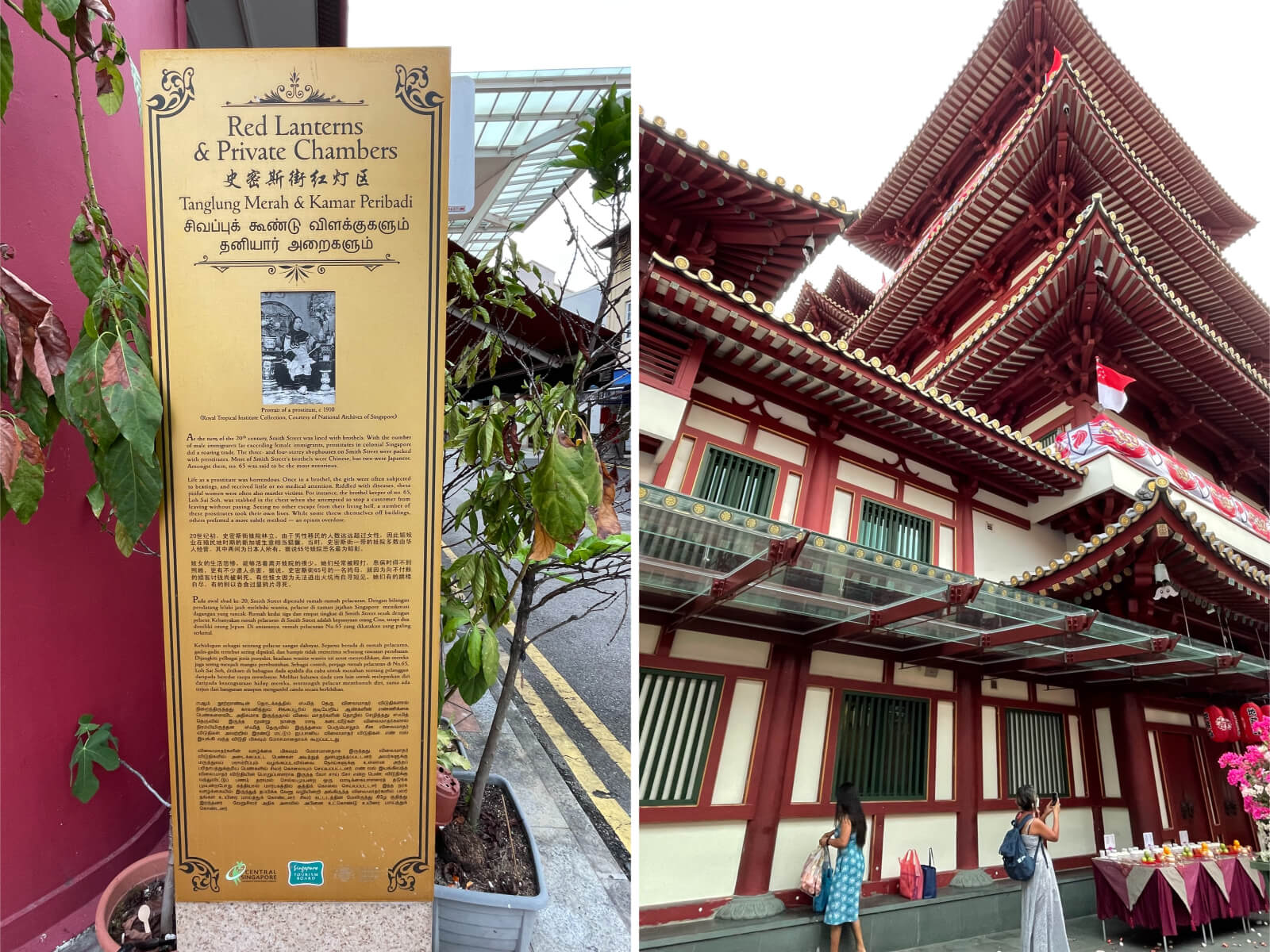
7. Buy Beef Jerky (Bak Kwa)
Bak kwa is a traditionally barbecued meat product, similar to a beef jerky, that is popularly consumed in Singapore and Malaysia during the Chinese New Year. It is an essential sweet and salty snack that is a staple in many celebrations.
We happened to pass by a Lim Chee Guan branch along New Bridge Road in Chinatown and it instantly caught my eye. Unbeknownst to us, we lucked out in discovering the shop as Lim Chee Guan is a leader in bak kwa-making. The Lim Chee Guan brand has a long history of selling Bak Kwa since 1938. They have their own winning recipe and process of roasting bak kwa which many Singaporeans have grown to love.
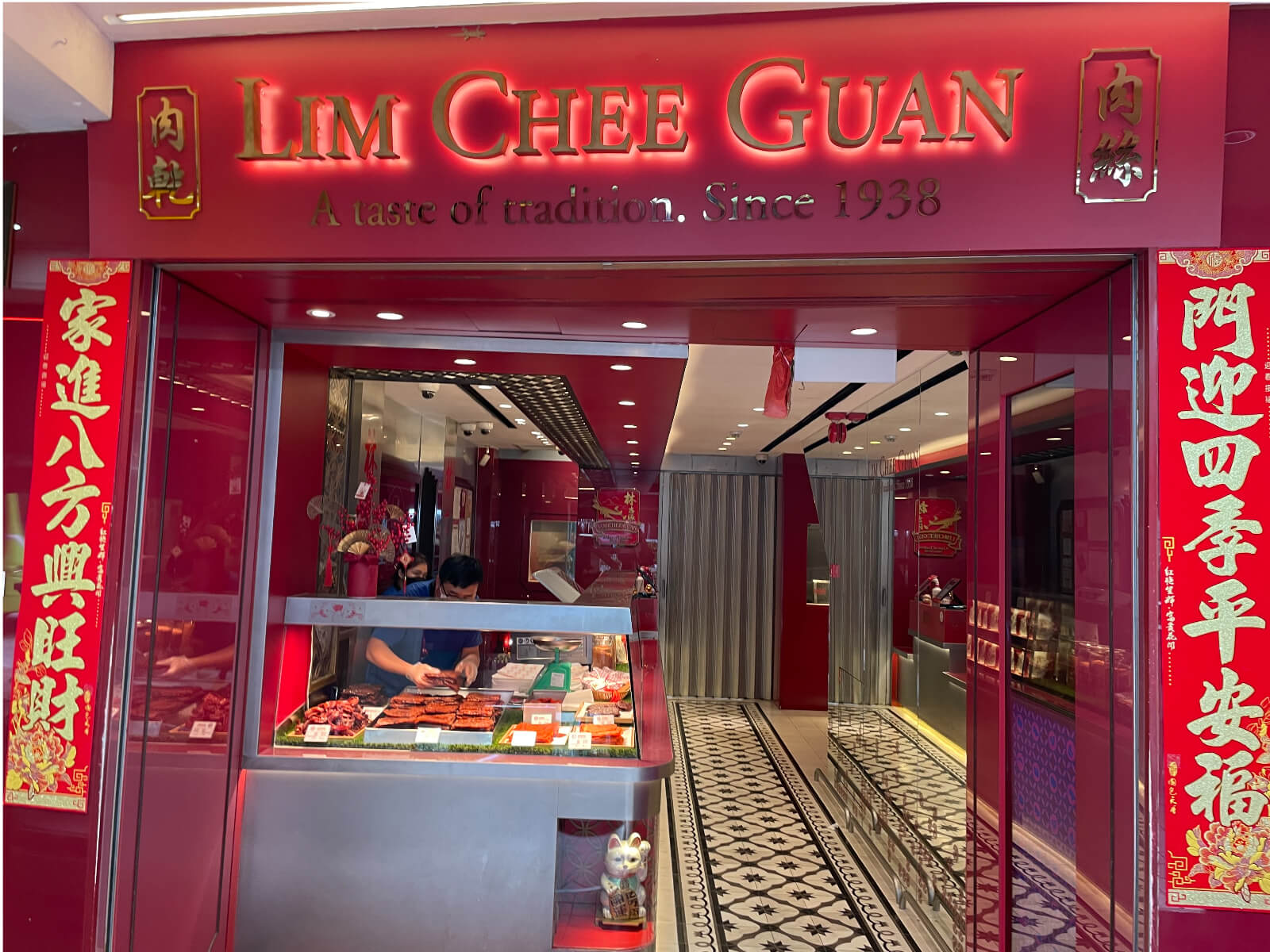
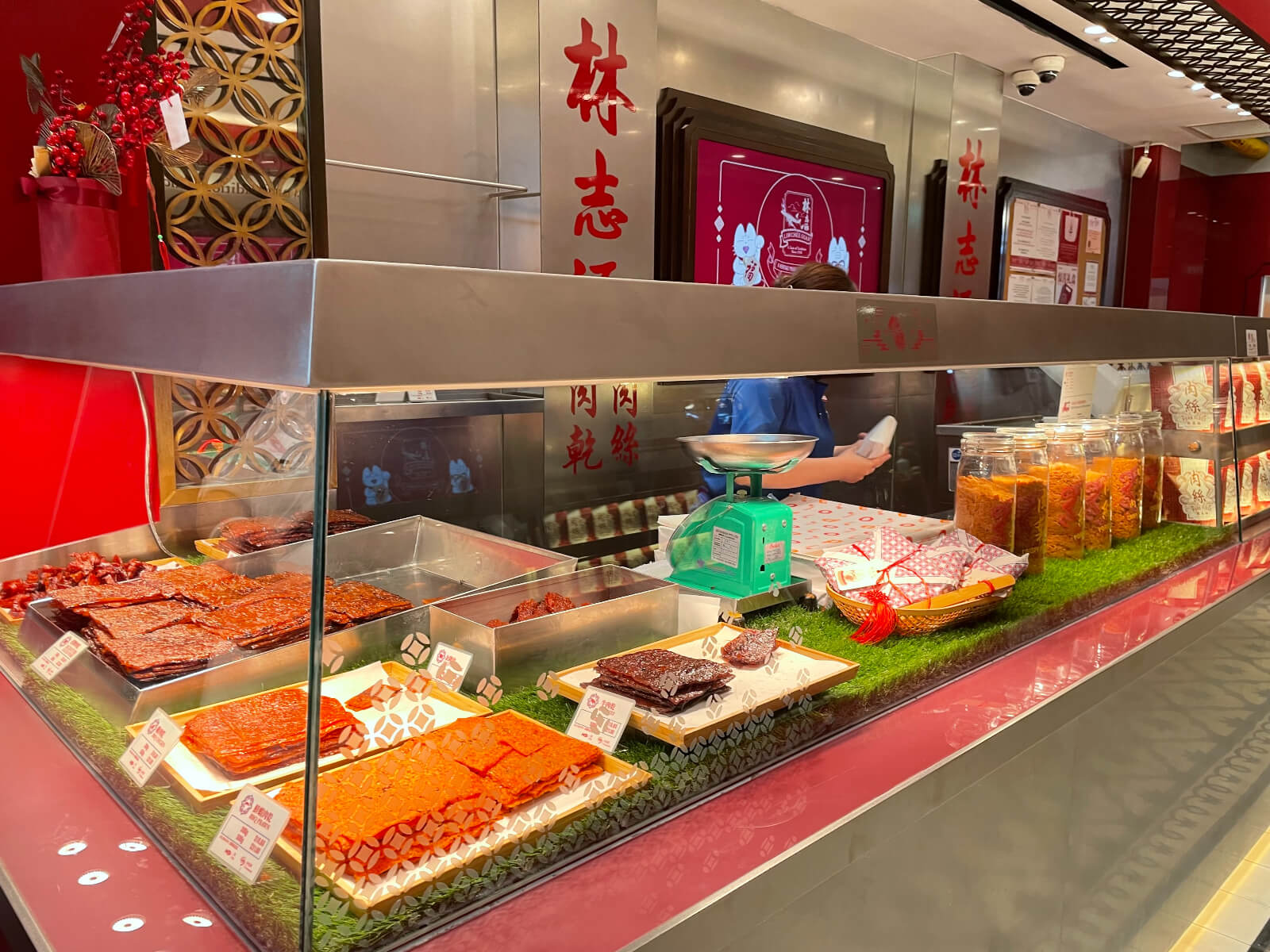
If you happen to be in Chinatown, make sure to drop by Lim Chee Guan for your beef jerky. They also have another branch in Chinatown at the People’s Park Complex. Other branches are located in ION Orchard and Jewel Changi respectively.
8. Try Chinese-Style Meat Buns and Egg Tarts
After all the walking that we did, I felt my stomach grumbling, and as I was also running low on sugar, I craved for a snack. While walking along Smith Street, we passed by Leung Sang Hong Kong Pastries. There was a bit of a queue and so we took notice and approached the display of pastries.
Tracing its roots to Hong Kong, the bakery’s specialty was the Hong Kong egg tart. Theirs were the best ones, and rightfully so. They also sell Chinese bakery classics, like the Bo Lo Bun (pineapple bun) and other types of meat-filled buns which I’ve enjoyed. After all, you can never go with bread stuffed with meat. Definitely not bad for an impromptu quick snack!
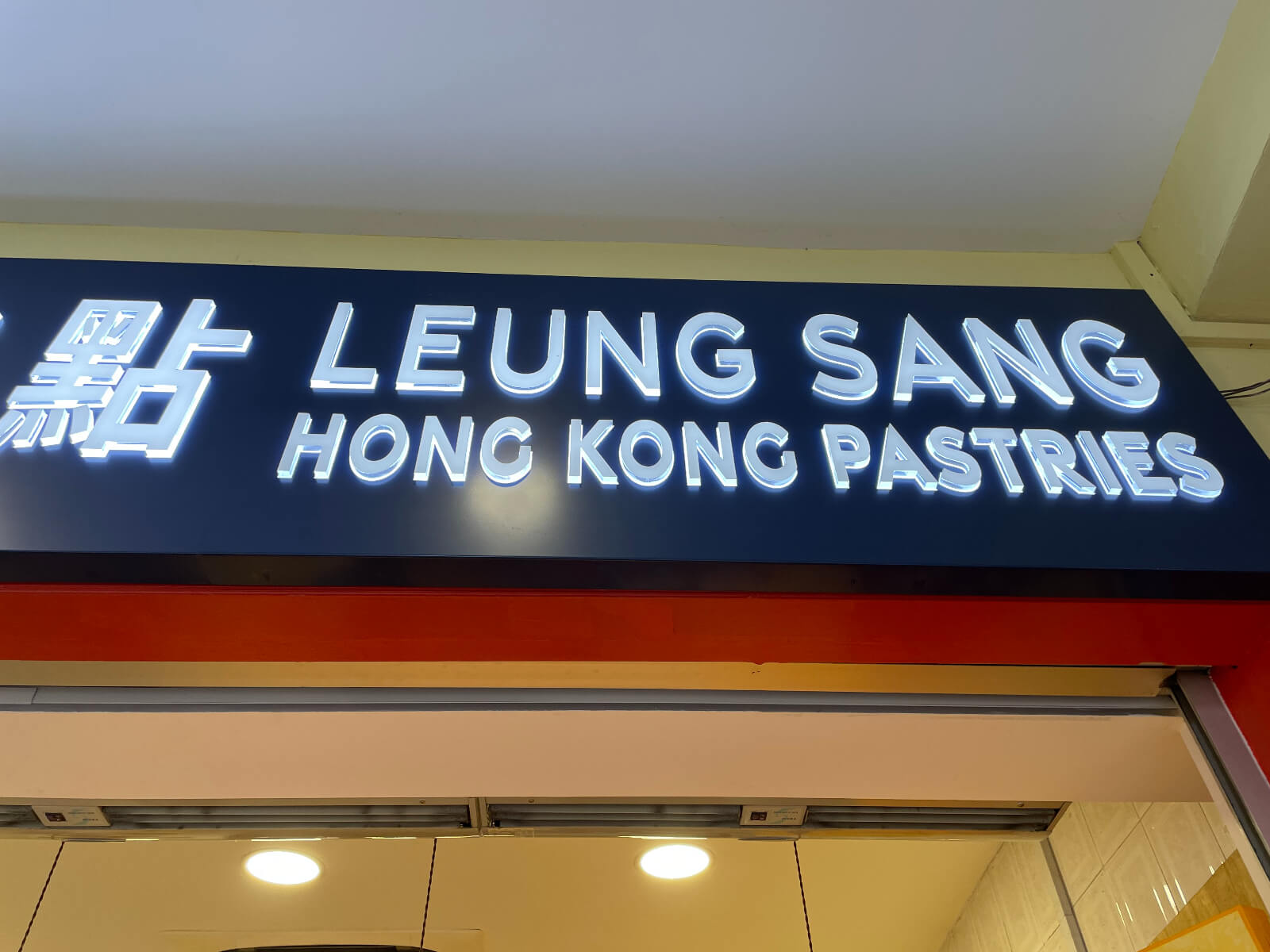
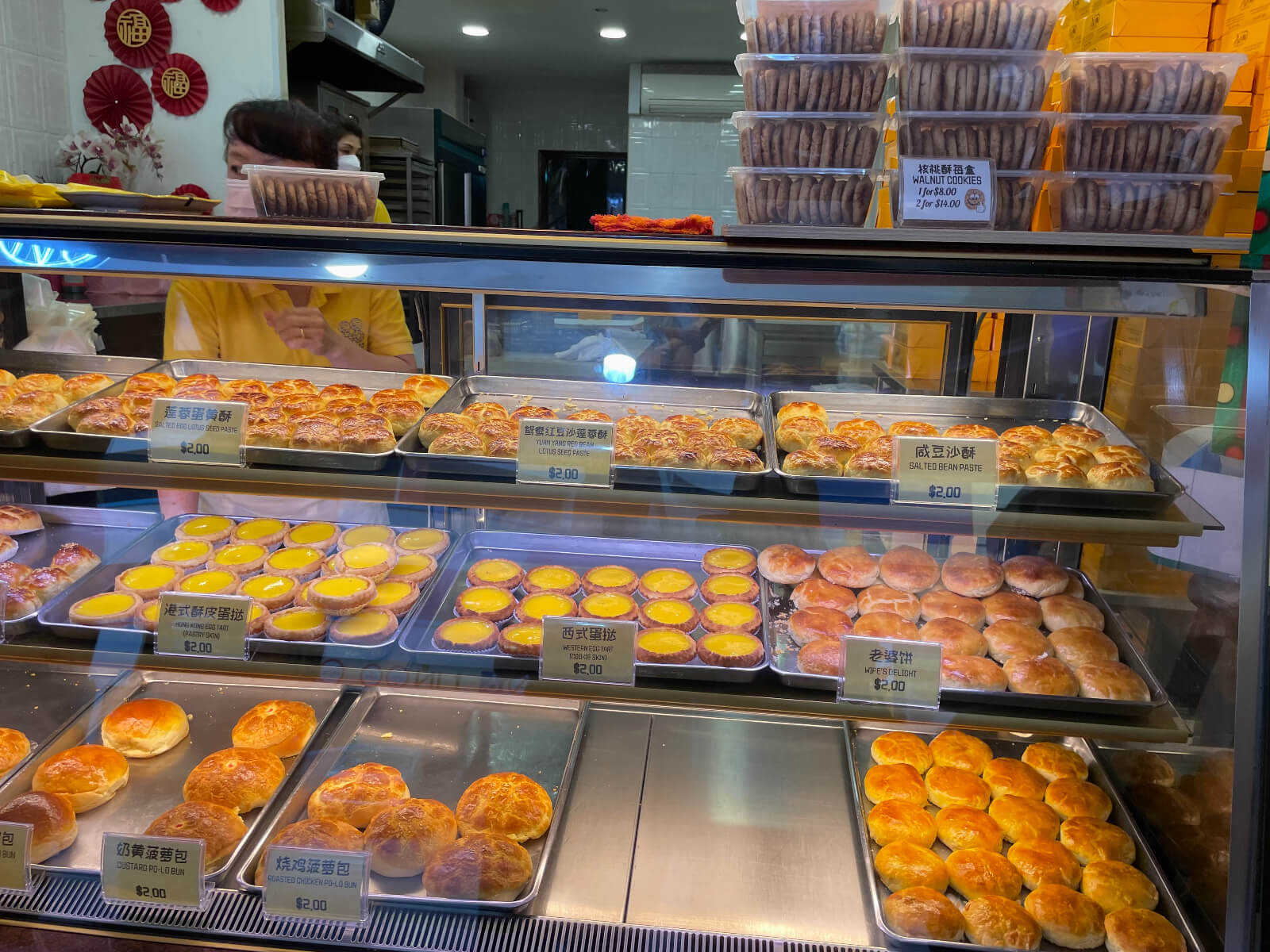
There you have it! These are our recommendations of what to do and a few attractions to visit in Singapore’s Chinatown. Did we miss anything? Comment down below!
Frequently Asked Questions
What is the historical significance of Chinatown?
Singapore’s Chinatown has a historical significance in the lives of locals as it was the first ethnic quarters in the city. It was the gateway to Singapore’s early migrant population. It is also the site of Singapore’s oldest temples, such as the Thian Hock Keng Temple, which was established in 1839, and the Sri Mariamman Temple, which was built in 1827. Singapore’s Chinatown is also one of the first commercial centers in the country, where the first colonial shophouses were built to cater to the needs of Chinese immigrants and the general population.
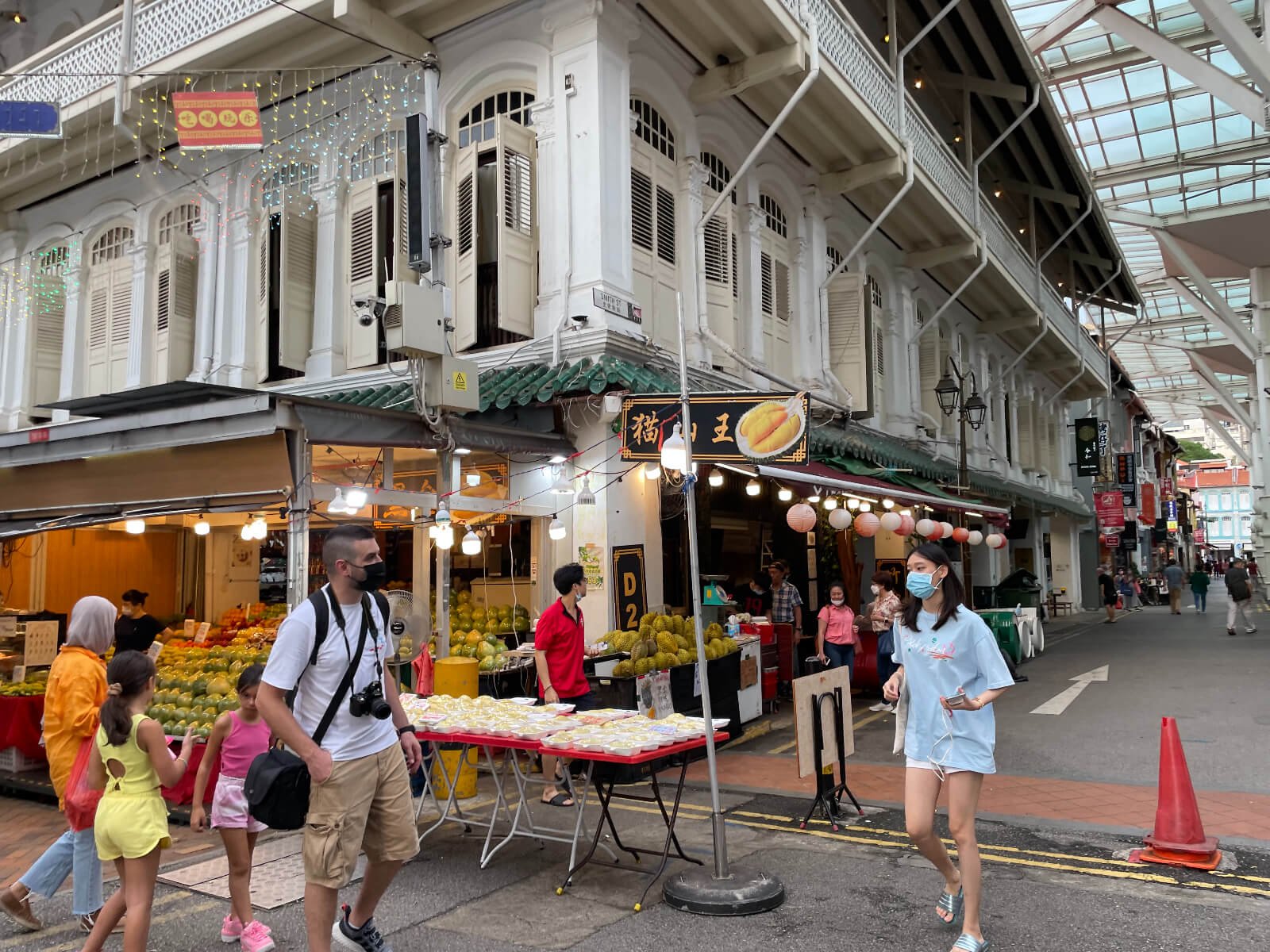
Is Chinatown Singapore free?
You don’t have to spend a single cent just to wander around Chinatown. Admission to most of Singapore’s Chinatown attractions are generally free, except for the Chinatown Heritage Centre (temporarily closed), where a minimum entrance fee is required to gain access to the museum.
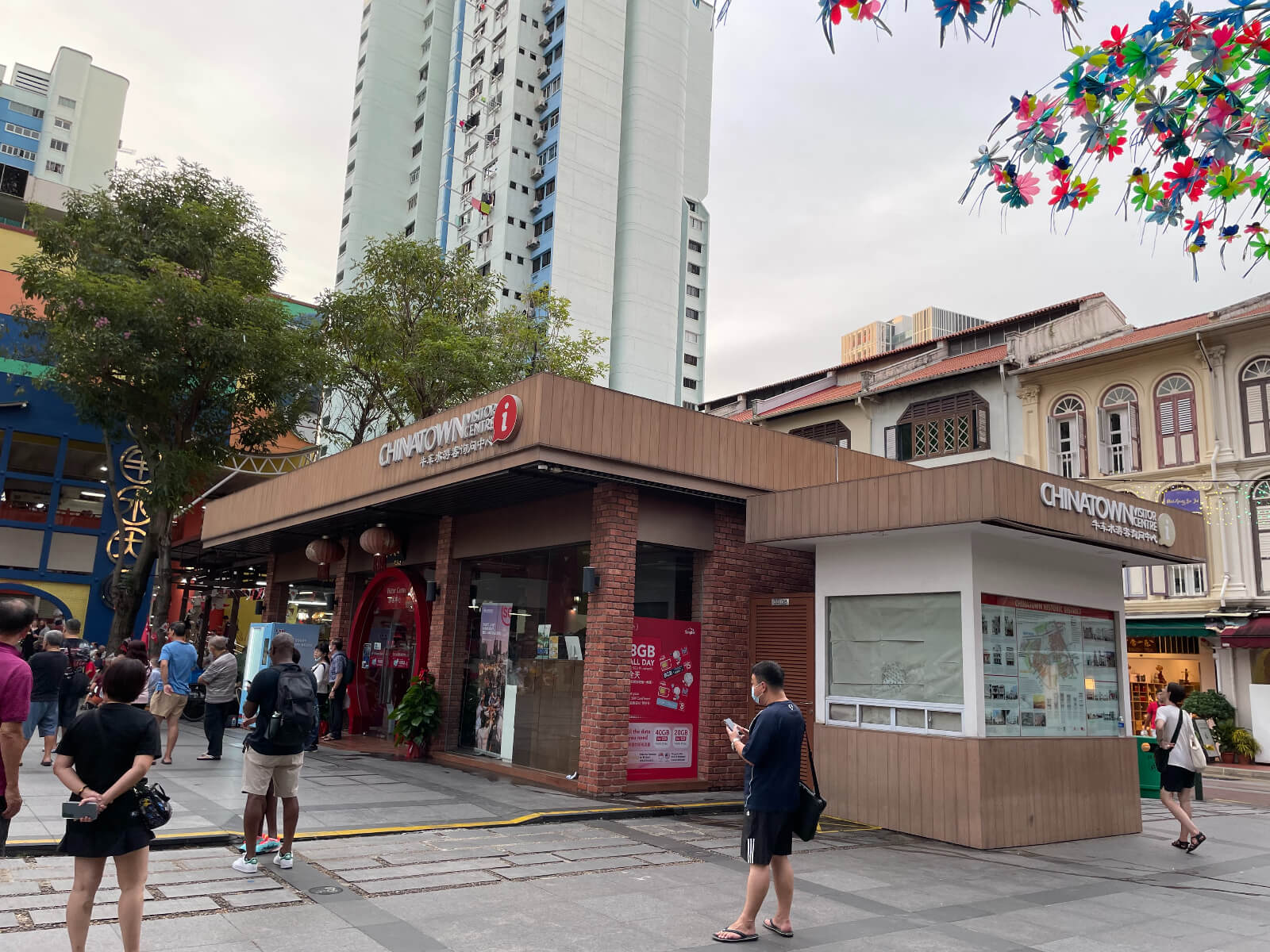
Is Chinatown a good area in Singapore?
Singapore’s Chinatown is absolutely a good area to explore and settle in. Chinatown is a leading tourist destination in Singapore, with an abundance of attractions, museums, restaurants and markets to cater to your needs.
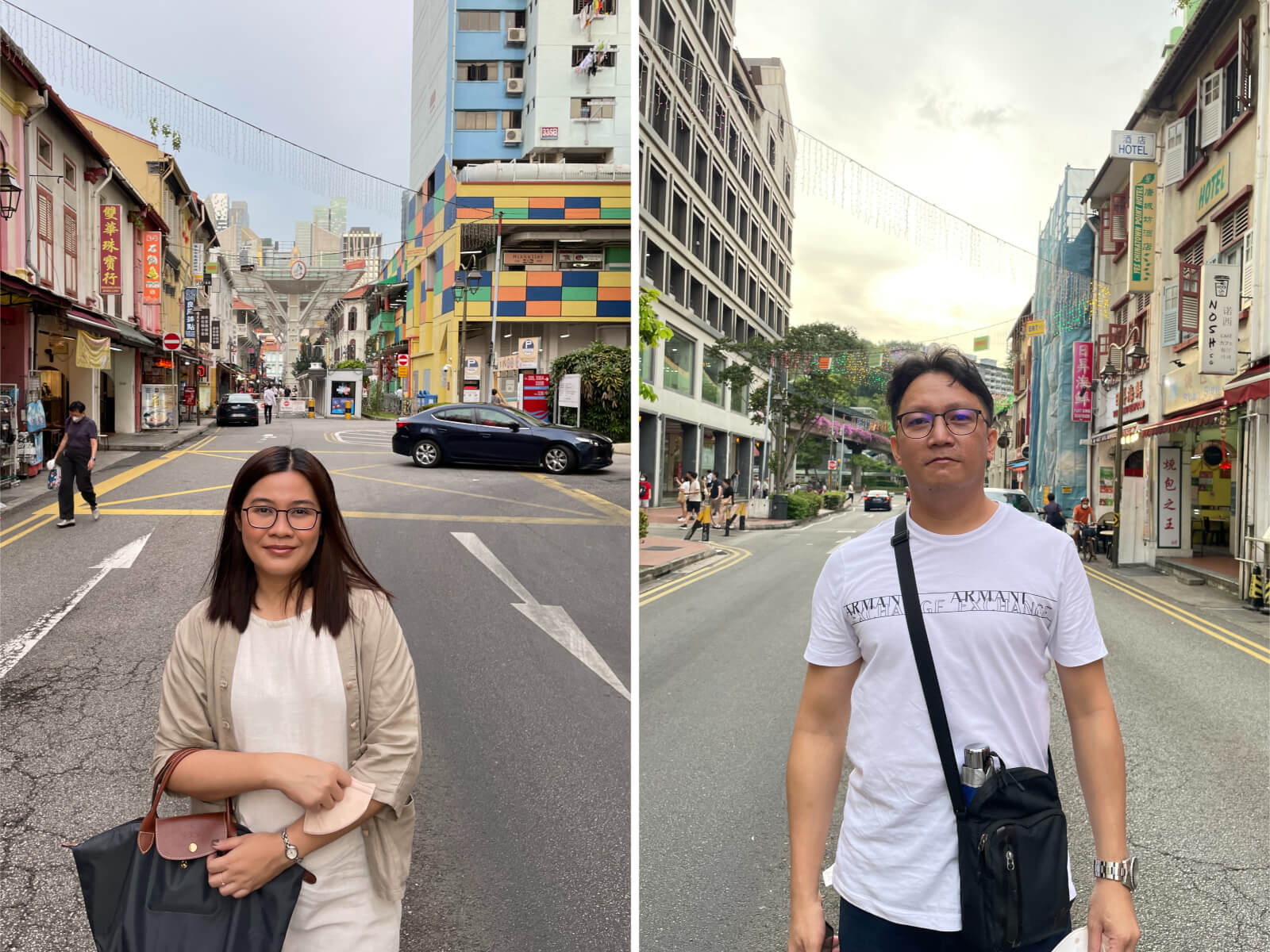
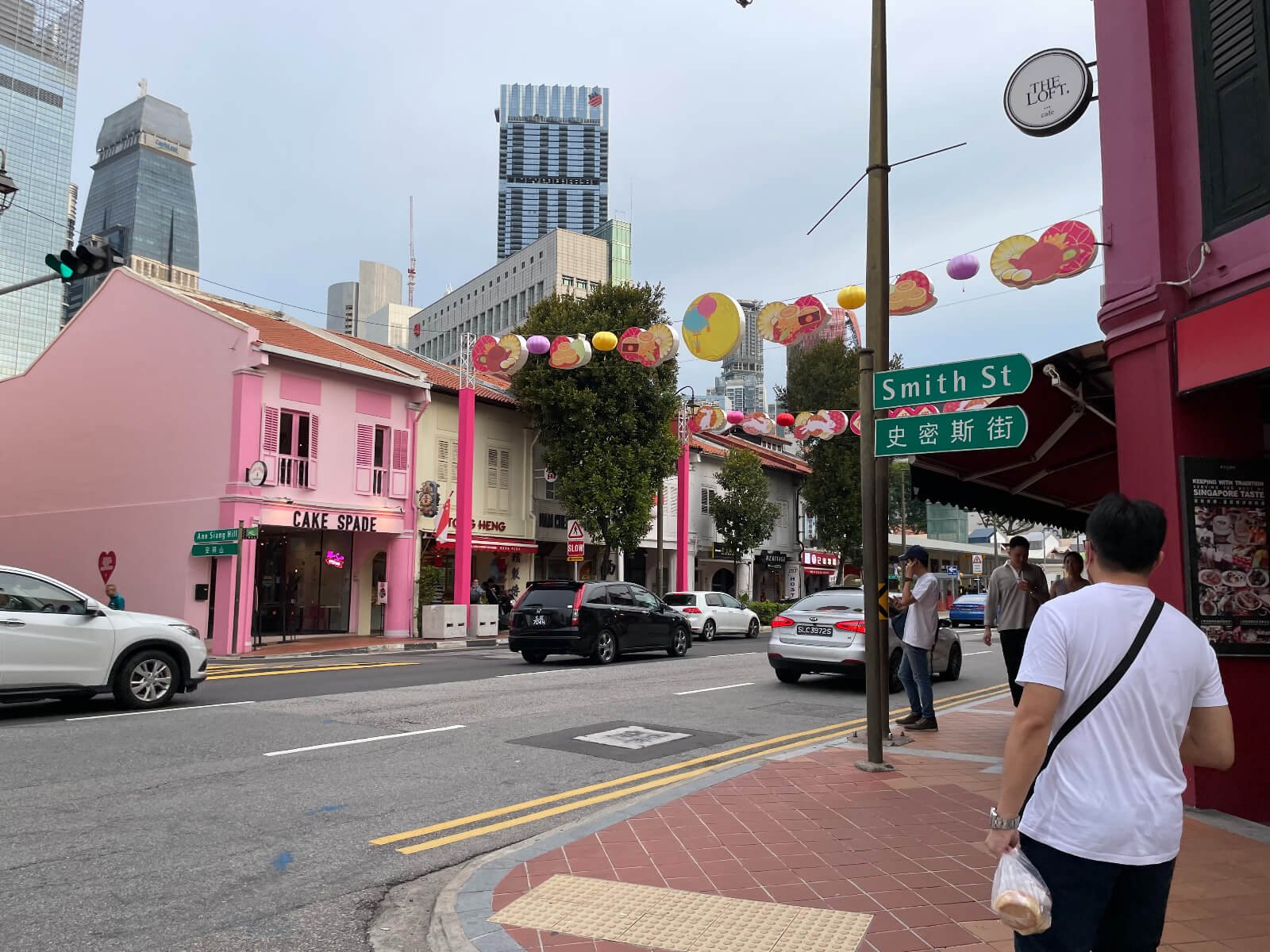
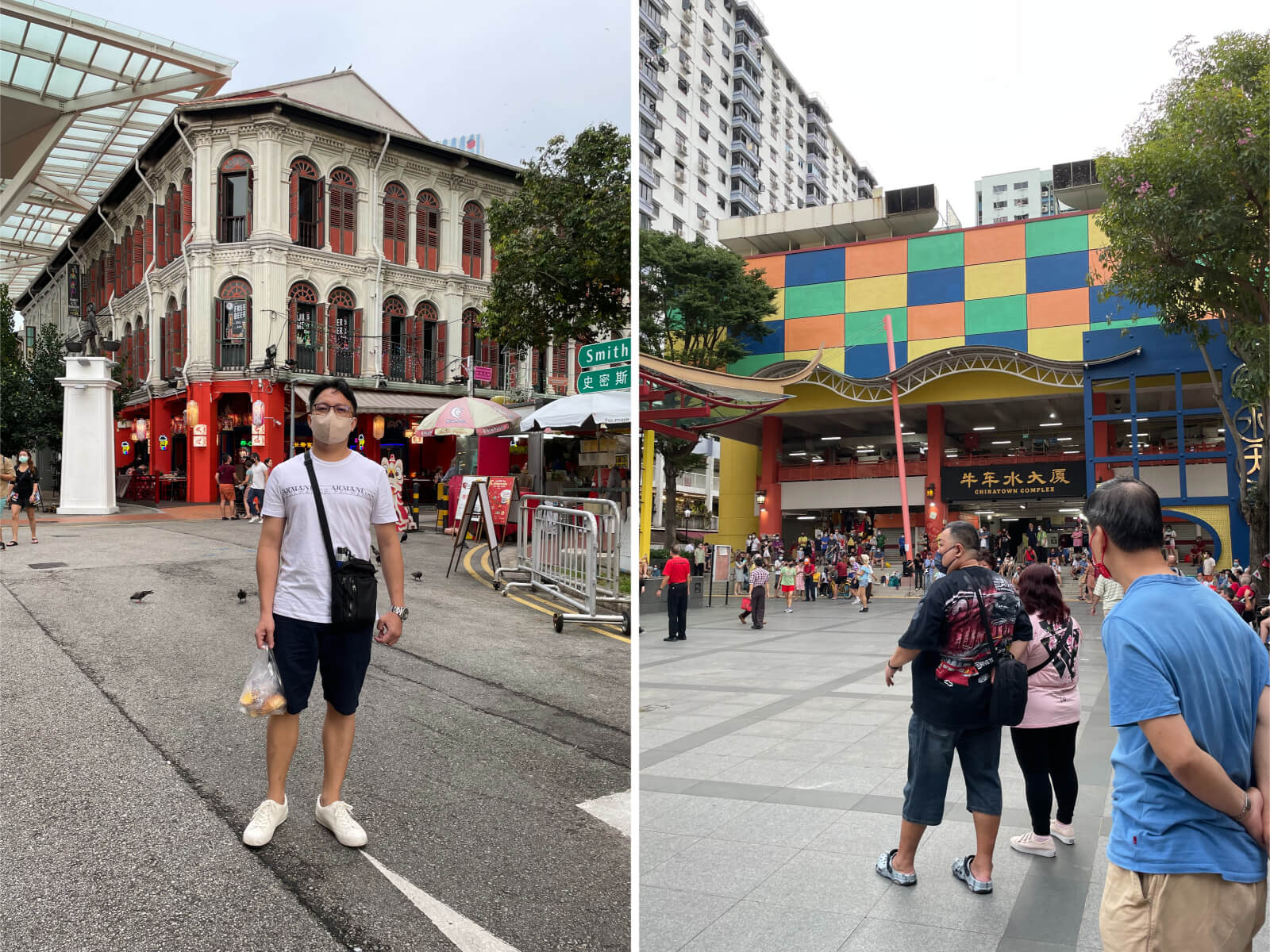
What is the best time to go to Chinatown?
The best time to visit Singapore Chinatown is after lunch to ensure that most of the shops and restaurants are open. It is also good to go in the evening when the beautiful lights are on and the street markets come alive. Evenings are especially the best if you aim to experience the street food scene.
However, if you want a less hectic experience and want to avoid the throngs of people, consider visiting Chinatown during the day. You should also consider timing your visit during the Chinese New Year celebrations to participate in the festivities.
Which side of Singapore is Chinatown?
Chinatown is a subzone and ethnic community located in the Outram district in the central part of Singapore. You can reach Chinatown by taking the Downtown Line or North-East line to Chinatown Station of the mass rapid transit system (MRT).
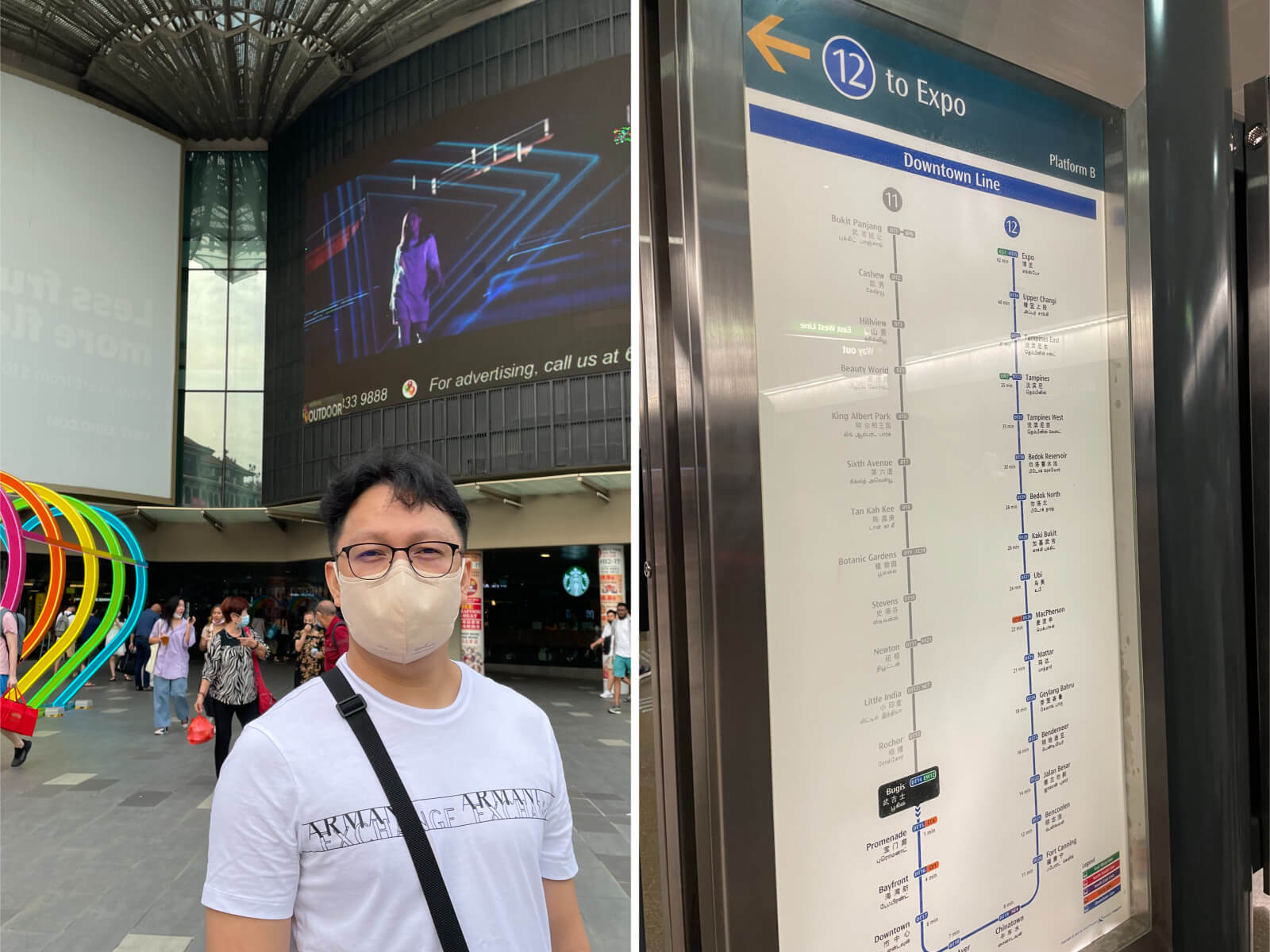
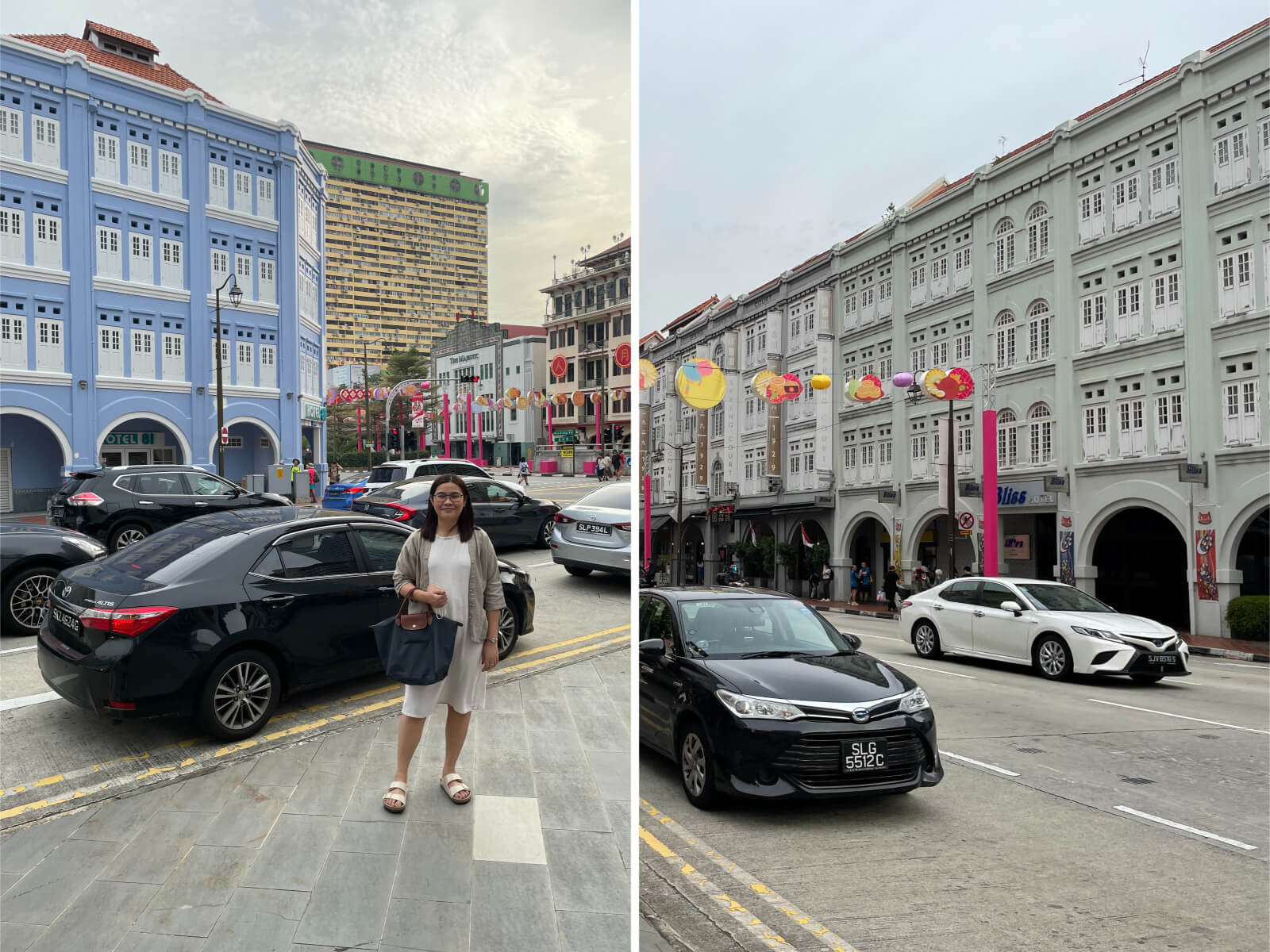
How long do you need in Chinatown Singapore?
Exploring Chinatown is manageable within a day or two. While it is a relatively large area, you can definitely cover a lot of the tourist attractions on a daytime walking tour.
